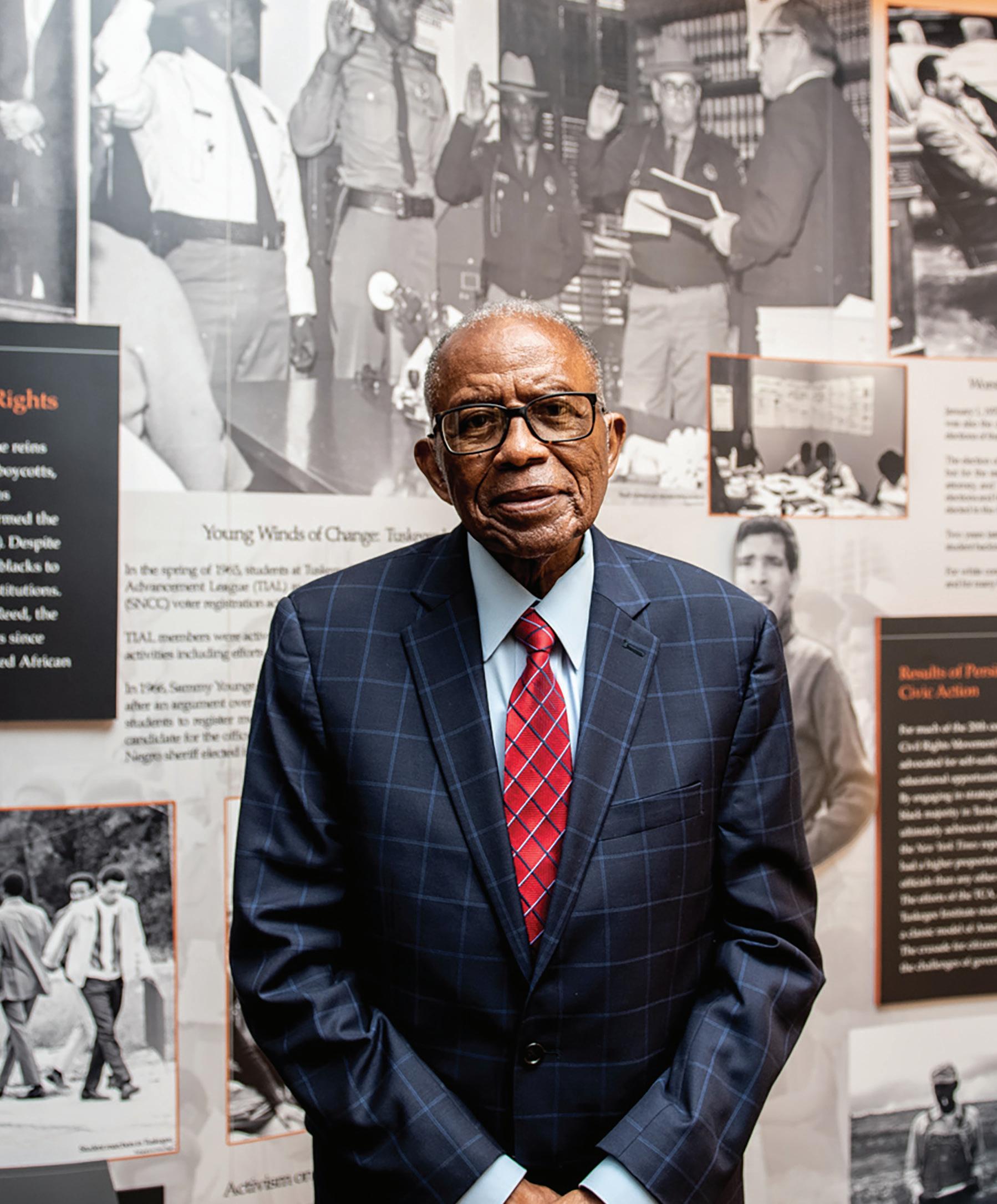
2024
TRAVEL GUIDE

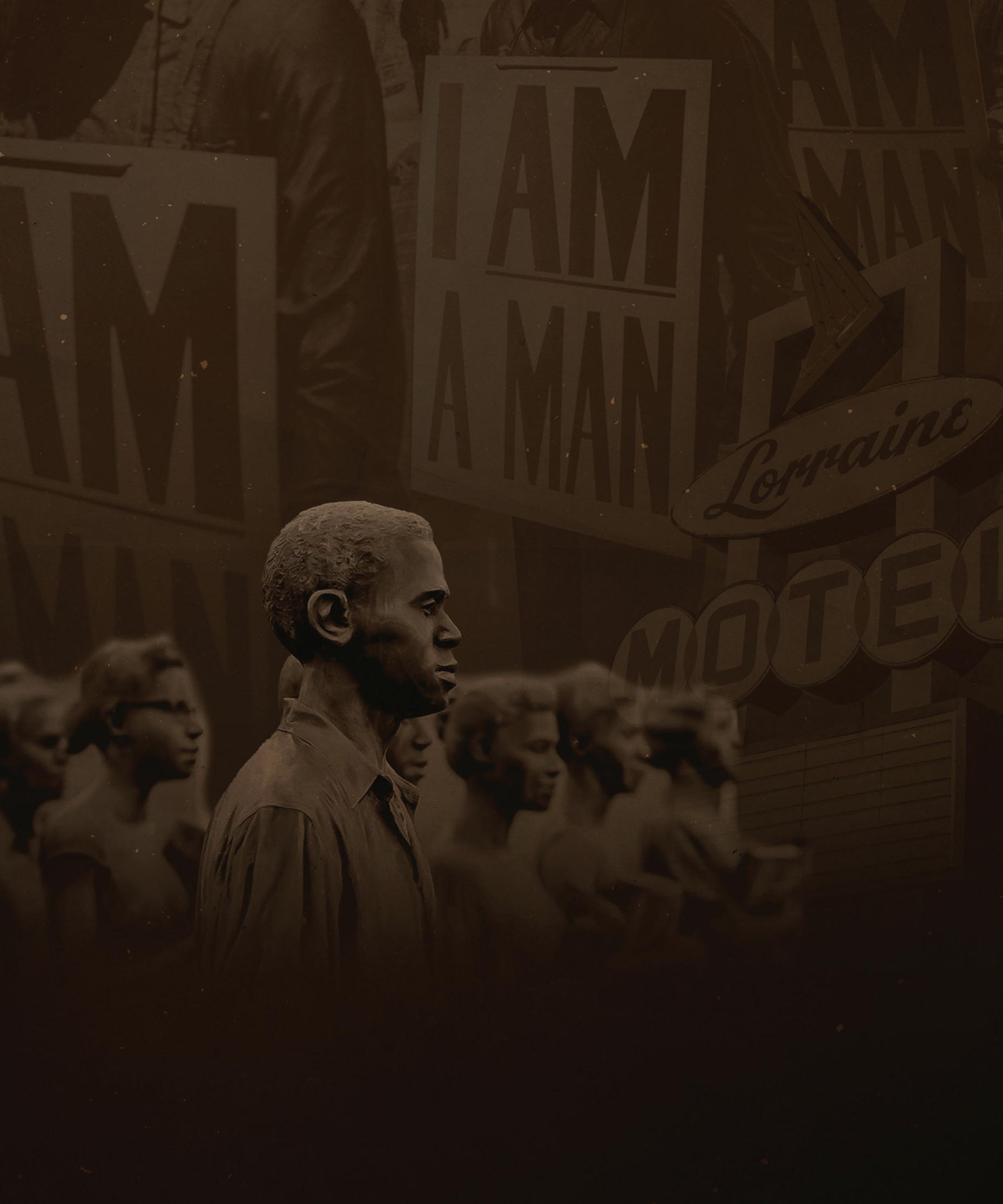
The U.S. Civil Rights Trail is a collection of churches, courthouses, schools, museums and other landmarks that played a pivotal role in advancing social justice in the 1950s and 1960s.

tncivilrightstrail.com
Scan to download the digital passport.
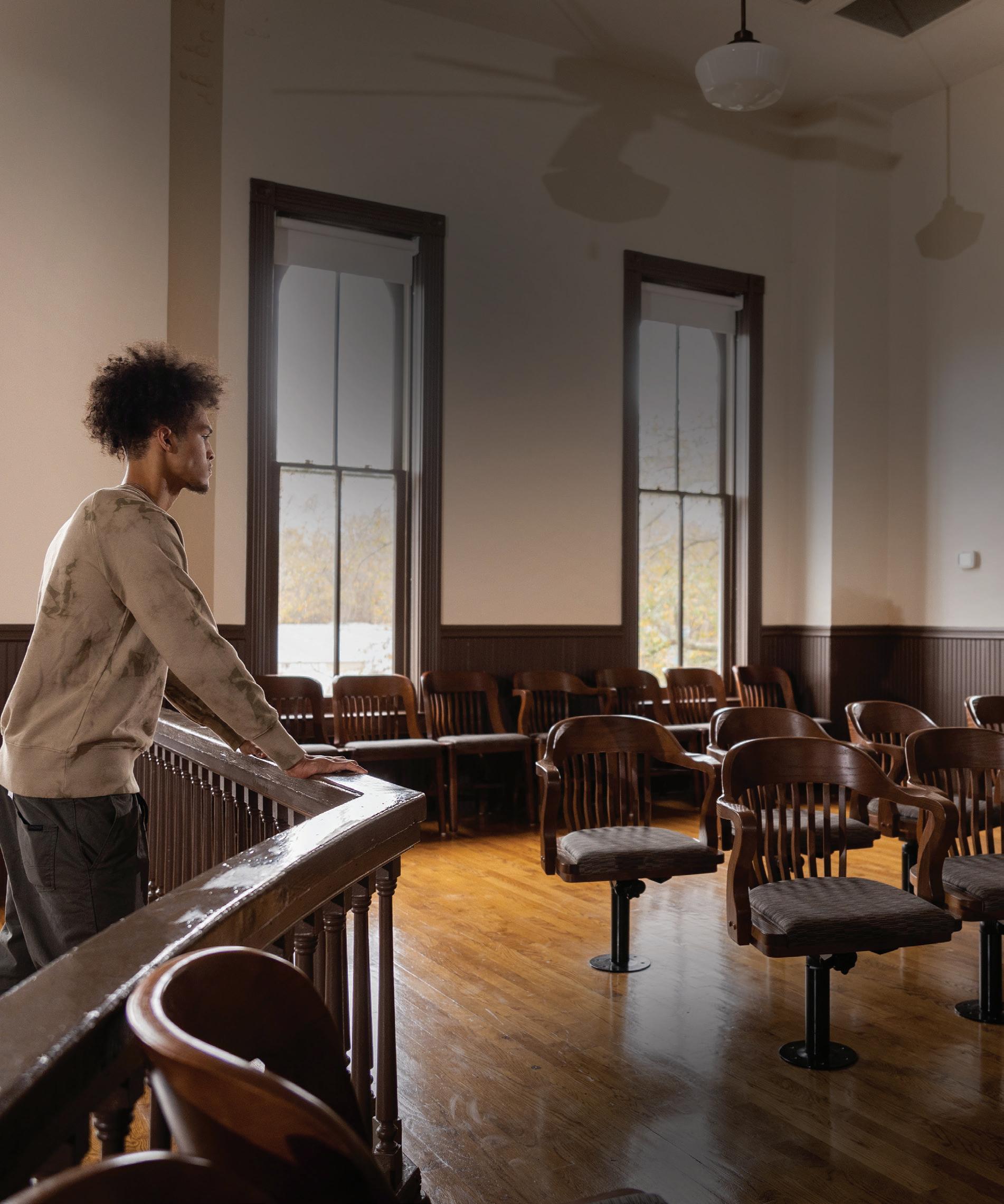
The experience is unforgettable . Because the lessons should never be forgotten .
There’s no better place to learn about the struggle for black equality while walking in the footsteps of the Movement’s heroes. It’s all here, from the world-class Mississippi Civil Rights Museum to the Fannie Lou Hamer Memorial Garden and Emmett Till Interpretive Center. Plan your journey today at VisitMississippi.org/CivilRights.
County Courthouse | Sumner, Mississippi
Tallahatchie



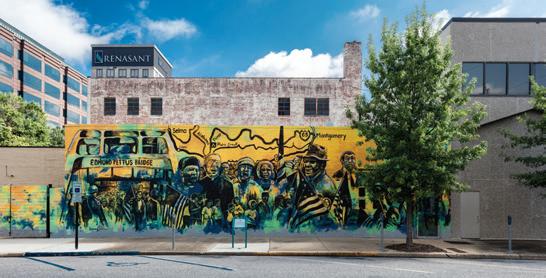
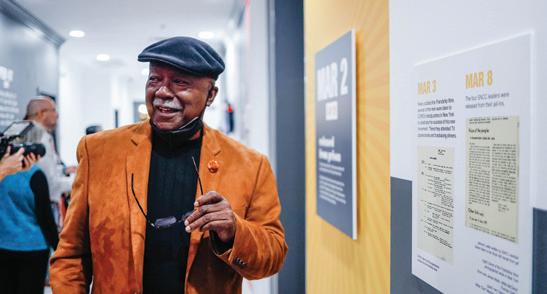
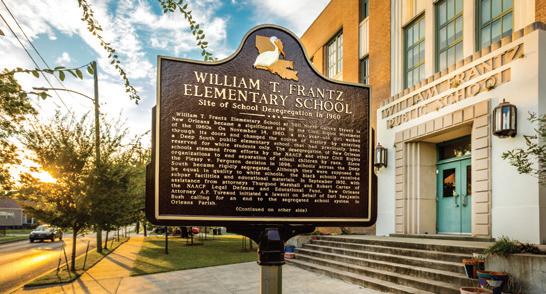


4 CONTENTS 12 34 The Mid-South The Carolinas THESE DESTINATIONS HONOR THE SACRIFICES OF CIVIL RIGHTS HEROES. STUDENT PROTESTORS MADE THEIR MARK IN NORTH CAROLINA AND SOUTH CAROLINA. TRACE THE STRUGGLE FOR EQUALITY THROUGH THE CAPITAL REGION AND BEYOND 20 40 26 46 The Virginias and D.C. VISIT THE SITES OF LANDMARK LEGAL RULINGS ALONG THE GULF COAST. Interstate 10 Corridor
Southeast
Midwest EXPLORE THE EPICENTER OF THE CIVIL RIGHTS MOVEMENT ON THIS ITINERARY. KANSAS AND MISSOURI MADE IMPORTANT CONTRIBUTIONS TO THE CAUSE OF DESEGREGATION. 6 A Meaningful Movement VISITING SITES ON THE U.S. CIVIL RIGHTS TRAIL IS ALWAYS IMPACTFUL. PUBLISHED FOR 3500 PIEDMONT RD. NE, STE. 775 ATLANTA, GA 30305 404-231-1790 CIVILRIGHTSTRAIL.COM PUBLISHED BY NICHE TRAVEL PUBLISHERS 301 EAST HIGH STREET LEXINGTON, KY 40507 859-253-0455 GROUPTRAVELLEADER.COM TO ADVERTISE: BRYCE@GROUPTRAVELLEADER.COM ON THE COVER: Fred Gray, who served as an attorney for many leaders in the Civil Rights Movement, poses in front of an exhibit at the Tuskegee Human and Civil Rights Multicultural Center in Alabama. Photo by Andy Rice.
The
The
What Happened Here Changed the World.

After Rosa Parks’s arrest on December 1, 1955 for refusing to give up her seat on a Montgomery, Alabama bus to a white passenger, more than 5,000 people gathered at Holt Street Baptist Church on December 5, 1955 to listen to Dr. Martin Luther King Jr. deliver a compelling speech promoting nonviolent protest strategies. This event marked the beginning of the Montgomery Bus Boycott, one of the most successful boycotts in history. It was also at this location and on this day that Rev. King was named president of the newly formed Montgomery Improvement Association (MIA).
information contact: Shawna.Faniel@tourism.alabama.gov or call 334.353.1907
For
As the World Watches
The U.S. Civil Right Trail draws interest from across the globe
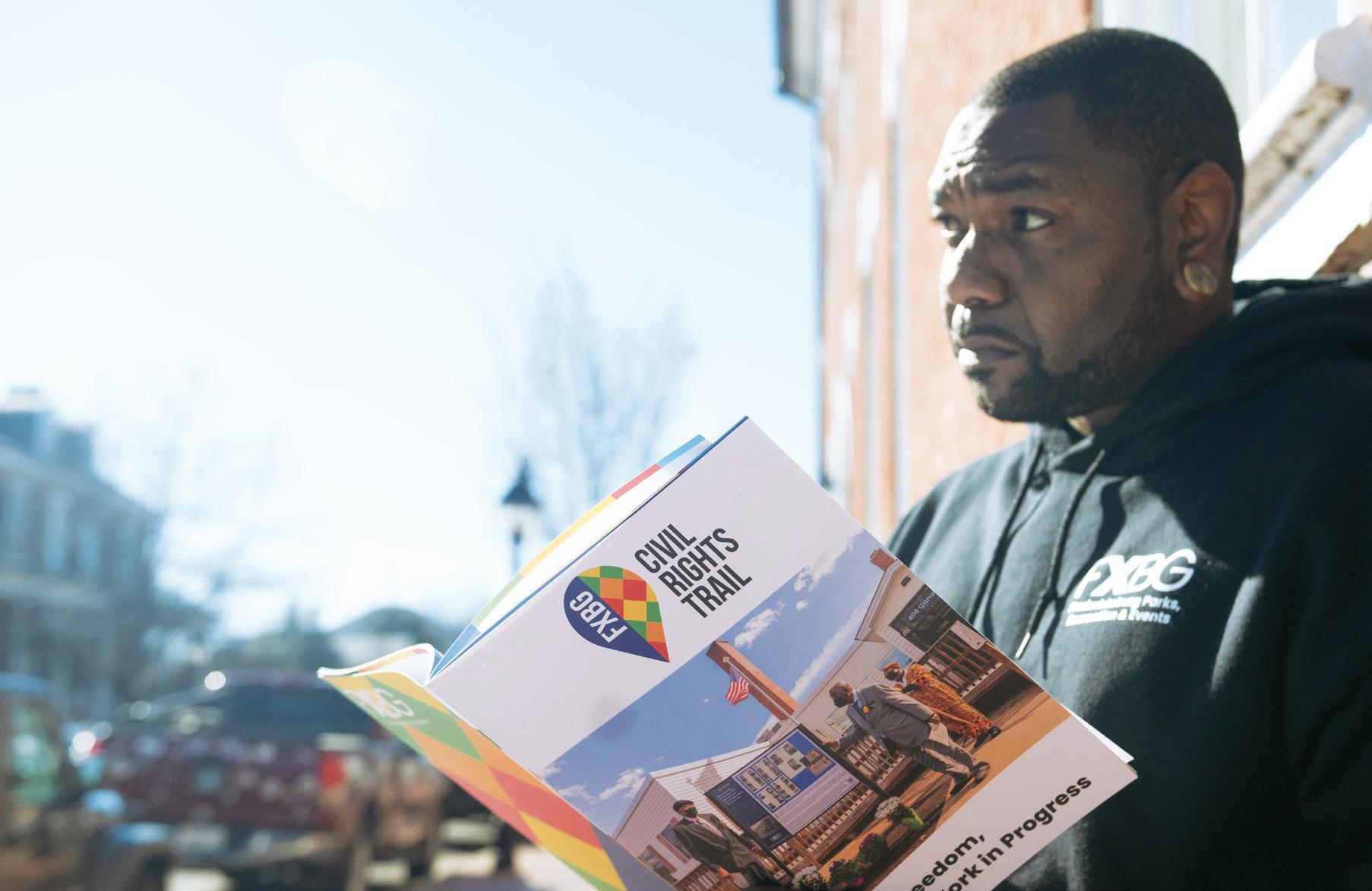 BY BRIAN JEWELL
BY BRIAN JEWELL
Mark Ezell believes the stories of the Civil Rights Movement can change the world.
As commissioner of the Tennessee Department of Tourism Development and chair of the U.S. Civil Rights Trail Marketing Alliance, Ezell has seen firsthand how interactive encounters with the Civil Rights legacy can make lasting impacts on travelers. And he believes the U.S. Civil Rights Trail — a collection of more than 130 sites related to the social and political movement of the 1950s and 1960s — has power to do real good.
“Our dream is to increase the number of visitors, domestically and internationally, to come to these important sites, learn, transform hearts and change the world,” Ezell said. “Because that’s what has happened to us. I’m a perfect example of someone who had not been exposed to the National Civil Rights Museum [in Memphis]. I went in the first few months after I became commissioner, and it was one of the most powerful experiences I have had in my five years [on the job].”
Launched in 2018, the U.S. Civil Rights Trail is a coopera-
tive effort to showcase historic sites, churches, museums and other places of interest integral to the Civil Rights Movement. The trail stretches from Topeka, Kansas, to Wilmington, Delaware, to Sarasota, Florida.
In the six years since its launch, the trail has brought significant levels of media coverage and public interest to its member sites and attractions. Its website, civilrightstrail.com, has logged more than 5 million visits from 43 countries. And the trail’s 23-episode podcast has won accolades from the U.S. Travel Industry Association.
But according to Ezell, those accomplishments are early steps on a longer journey.
“We have the ability to expand our reach, both in the number of sites and in the visitor experience,” he said. “And we believe there are new levels of success we can bring in our promotion, marketing, support and our creation of sites. That will help communities and change visitors.”
6
THE FREDERICKSBURG CIVIL RIGHTS TRAIL, WHICH HIGHLIGHTS HISTORIC PLACES AROUND THE CITY, IS ONE OF THE NEWEST SITES ON THE U.S. CIVIL RIGHTS TRAIL.
Courtesy USCRT

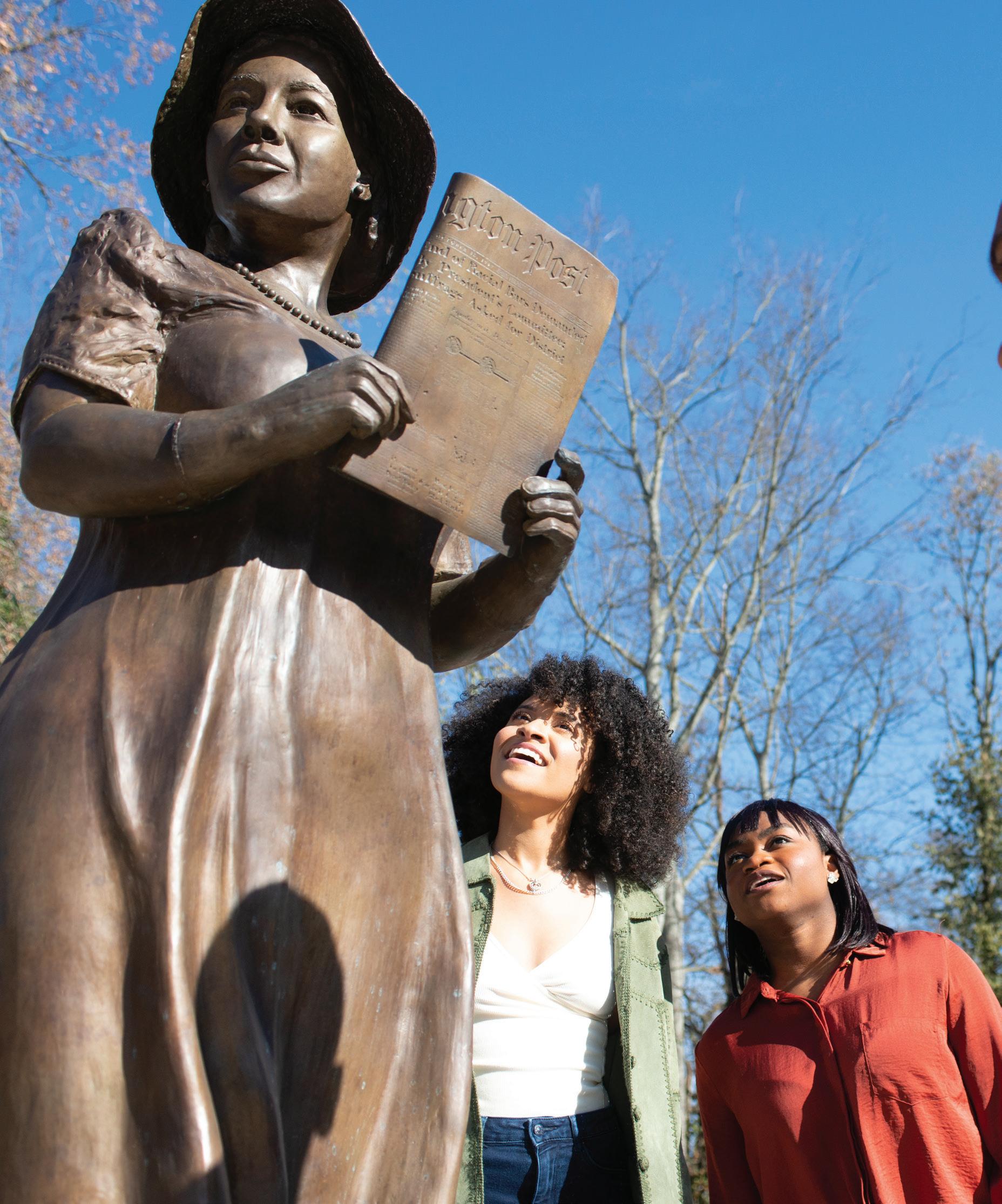
Ordinary People. Extraordinary Courage. A Singular Focus.
The Civil Rights Movement was a lightning bolt in the history of our nation forged through the efforts and sacrifice of thousands of individuals, many of whom we’ll never know.
But with the U.S. Civil Rights Trail in Kentucky, we’re shining a light on a number of the stories, people and events that not only changed Kentucky, but forever changed the country.
We invite you to explore Whitney Young’s birthplace, Lincoln Hall at Berea College, Louisville’s downtown Civil Rights Trail and the Muhammad Ali Center, and to visit the SEEK Museum in Russellville.
kentuckytourism.com
SEEK Museum, Russellville
Adding New Sites
Every year, the U.S. Civil Rights Trail Marketing Alliance considers applications for new sites and organizations interested in joining the trail. For 2024, the trail is adding four new sites — one each in Tennessee, South Carolina, Alabama and Virginia.
In Memphis, Tennessee, the Withers Collection Museum and Gallery houses the work of Ernest Withers Sr., a photojournalist who captured many iconic images of the Civil Rights Movement.
“This museum on Beale Street is one of those gems we’re going to draw attention to,” Ezell said. “His photos told the story of the Civil Rights Movement in Memphis, especially during the Memphis Sanitation Workers Strike, which ended with the tragic assassination of Dr. King.”
Another new trail site, the recently opened International African American Museum in Charleston, South Carolina, is located on a block that was once a hub for the trans-Atlantic slave trade. The museum covers various aspects of African American history and the Black experience in America, including exhibits detailing South Carolina’s pivotal role in the Civil Rights Movement.
“They do the important work of the slavery story, which needs to be told, but also the story of Civil Rights,” Ezell said.
The new trail site in Alabama is Montgomery’s Holt Street Memorial Baptist Church, where Martin Luther King Jr. spoke to more than 5,000 people promoting nonviolent protest methods in the wake of Rosa Parks’ arrest. The meeting led to the successful Montgomery Bus Boycott.
And in Virginia, the Fredericksburg Civil Rights Trail highlights 21 places around downtown Fredericksburg and the surrounding community that were significant to the Civil Rights Movement. Ezell called the Fredericksburg trail “a little bit of a hidden gem and an untold story.”
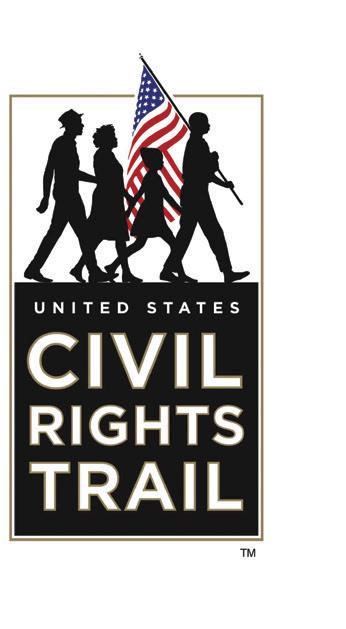 By Justin Fox Burks, c ourtesy TN Dept. of Tourist Dev.
By Justin Fox Burks, c ourtesy TN Dept. of Tourist Dev.


Deepening Connections
In addition to adding new sites, the U.S. Civil Rights Trail Marketing Alliance is looking at ways to deepen connections between sites, both within specific communities and across the trail as a whole. Ezell said he recently drew inspiration from an alliance board meeting in Montgomery, where numerous Civil Rights sites work closely together to create an immersive and moving visitor experience throughout the community.
“That has really excited us,” Ezell said. “We started realizing the importance of stakeholder engagement. In Tennessee, for example, how are we working with the Civil Rights Reading Room people at the Nashville library and the Green McAdoo Cultural Center people [in Clinton] and the National Civil Rights Museum in Memphis? How are we engaging them with us and each other?
“There are more than 130 sites on the trail, mostly in the South. How do we get them to be connected with us at the state level, within their cities and also to each other? How are they building on each other so that a visitor can connect a lot more of the stories?”
To accomplish that, the marketing alliance is conducting survey work with its trail sites and creating new strategies and marketing plans that will be implemented in the coming years.
The work, Ezell said, is not just about promoting sites but also facilitating deeper change for visitors and communities.
Travelers planning a trip on the U.S. Civil Rights Trail can find all the latest news about Civil Rights sites and events
CIVILRIGHTSTRAIL.COM

“We get to promote a lot of great things in tourism, but there aren’t many that can also be transformative to people,” he said. “The Civil Rights sites have certainly been transformative to me. They have helped me grow, learn change and be a better person who lives in Nashville, Tennessee, and America. That feels good inside your heart.”
8
ABOVE: AN EXHIBIT AT THE WITHERS COLLECTION MUSEUM AND GALLERY IN MEMPHIS.
RIGHT: TENNESSEE TOURISM COMMISSIONER MARK EZELL






AMERICAN JAZZ MUSEUM NEGRO LEAGUES BASEBALL MUSEUM EXPLORE THE INTERSECTION OF HISTORY AND CULTURE. Experience the rich legacy of 18th and Vine, Kansas City’s historic jazz district. Savor award-winning barbecue and brews, retrace the history of jazz and learn how baseball broke the color barrier in the United States. For group travel assistance, contact Megan Sheets with Visit Missouri at Megan.Sheets@ded.mo.gov
VINE STREET BREWING CO.
ARTHUR BRYANT’S
BARBEQUE
At 93, attorney Fred Gray continues the fight for civil rights
 FRED
BY VICKIE MITCHELL
FRED
BY VICKIE MITCHELL
By deciding to become a lawyer instead of a pastor, Fred Gray changed his career path and the course of American history.
General Counsel
The Alabama native became a leader in the civil rights movement just a few months after he opened his Montgomery law office in 1954. Civil rights leader Ed Nixon had inspired Gray’s leap into law. “He told me ‘Lawyers help people, and we are always looking for lawyers,’” said Gray.
So, Gray went to law school in Ohio — Alabama law schools were segregated at the time — and returned to his home state, determined “to destroy everything segregated I could find. I’ve been trying to destroy everything segregated I could find since then.”
He’s still at it at 93, working in his law practice, which has offices in Montgomery and Tuskegee, most every day.
Alabama Tourism director Lee Sentell has enjoyed getting to know Gray these past 20 years and has learned much from him.
“People are amazed that Attorney Gray, who was Rosa Parks’ and Martin Luther King’s personal attorney, is still working and speaking. His memory and recall are perfect,” said Sentell.
Although many of Gray’s clients were high profile, Gray was not as widely known, largely because his role in the civil rights movement was behind the scenes.
Gray was, as King described, “the general counsel” of the protest movement.
The two worked closely together on the Montgomery Bus Boycott, Gray fresh out of law school, King the new pastor at Dexter Avenue Baptist Church. King was the protest’s voice, Gray its legal counsel.
“I wasn’t the one talking to the public, but I had to keep the law straight,” said Gray. “It was my responsibility that everything they did was legal.”

CUSTOM CONTENT FROM ALABAMA TOURISM
GRAY AT THE TUSKEGEE HISTORY CENTER
GRAY
All photos courtesy Alabama Tourism
GRAY COFOUNDED THE TUSKEGEE HUMAN AND CIVIL RIGHTS MULTICULTURAL CENTER
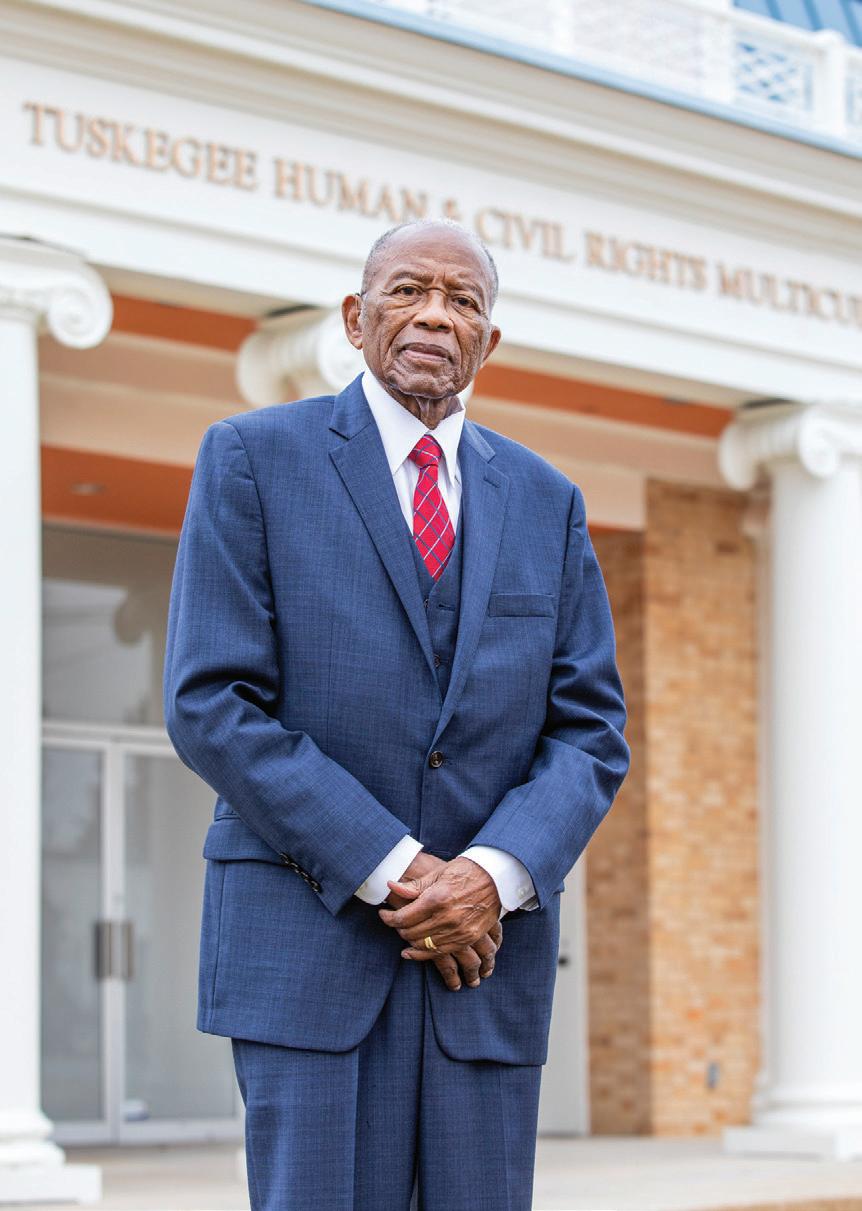

The Work Continues
In the ensuring decades, Gray’s legal expertise continued to be called upon in numerous landmark civil rights cases. He also ran for public office and was elected to the Alabama legislature, the first time an African American had been elected to that legislative body since Reconstruction.
He also cofounded the Tuskegee Human and Civil Rights Multicultural Center (now the Tuskegee History Center). “He enjoys showing off the center, which he created with funds from President Bill Clinton,” said Sentell.
Although the center opened in 1997 as a memorial to the black men who died or suffered after being intentionally misinformed about the nature of the Tuskegee Syphilis Study, its exhibits have expanded since then. It explores the three cultures that have influenced Tuskegee—Native American, European American and African American—and examines important advances made by students at the Tuskegee Institute (now Tuskegee University), the first institution of higher learning for African Americans. And the center details the struggle for civil rights, making it an essential stop on the U.S. Civil Rights History Trail, Gray says. “We have in our small museum a glimpse of every aspect of the civil rights movement from the right to vote to civil rights amendments made to the Constitution to all the cases from slavery forward.
“With our exhibits, you see who these people were, what they did and how they did it,” said Gray.
The center also reminds that the work to guarantee equal rights for all continues. “You are able to look at the problems we are facing now,” said Gray.
Not surprisingly, Gray has received many prestigious awards, including the Thurgood Marshall Award, the American Bar Association’s highest honor. In 2022, he received the Presidential Medal of Freedom, the highest civilian honor in this country. President Joe Biden rang Gray to tell him the news.
No doubt, those awards are meaningful. But Gray reminds, they were never his motivation.
“My goal was to see that African Americans had all of the rights and privileges as all other citizens of the United States.” That work, he says, is not done. “The struggle for equal justice under the law continues, and I’m still at it; I filed a civil rights case about a year ago to get the Confederate Monument moved from the square in Tuskegee.”

To plan a tour of the Tuskegee History Center, contact Alabama Tourism at: TOURISM.ALABAMA.GOV ROSEMARY JUDKINS rosemary.judkins@tourism.alabama.gov 334-242-4493 SHAWNA FANIEL shawna.faniel@tourism.alabama.gov 334-353-1907
GRAY IN FRONT OF AN EXHIBIT AT THE TUSKEGEE HISTORY CENTER
MID-SOUTH THE VIRGINIAS & D.C.
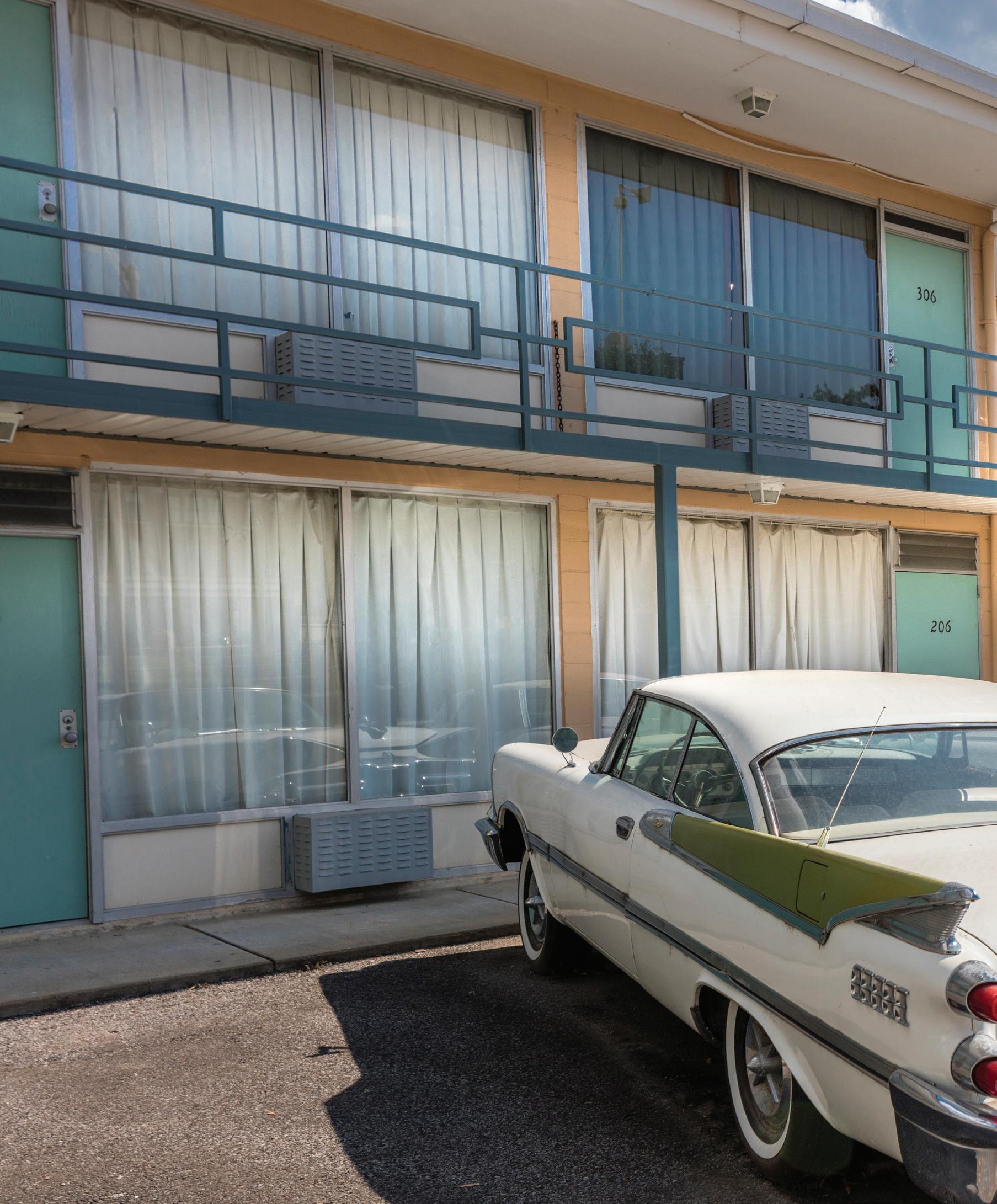 THE NATIONAL CIVIL RIGHTS MUSEUM IN MEMPHIS INCLUDES THE LORRAINE MOTEL WHERE MARTIN LUTHER KING, JR. WAS ASSASINATED IN 1968.
Jackson
Sumner
Little Rock
Memphis
Nashville
Louisville
THE NATIONAL CIVIL RIGHTS MUSEUM IN MEMPHIS INCLUDES THE LORRAINE MOTEL WHERE MARTIN LUTHER KING, JR. WAS ASSASINATED IN 1968.
Jackson
Sumner
Little Rock
Memphis
Nashville
Louisville
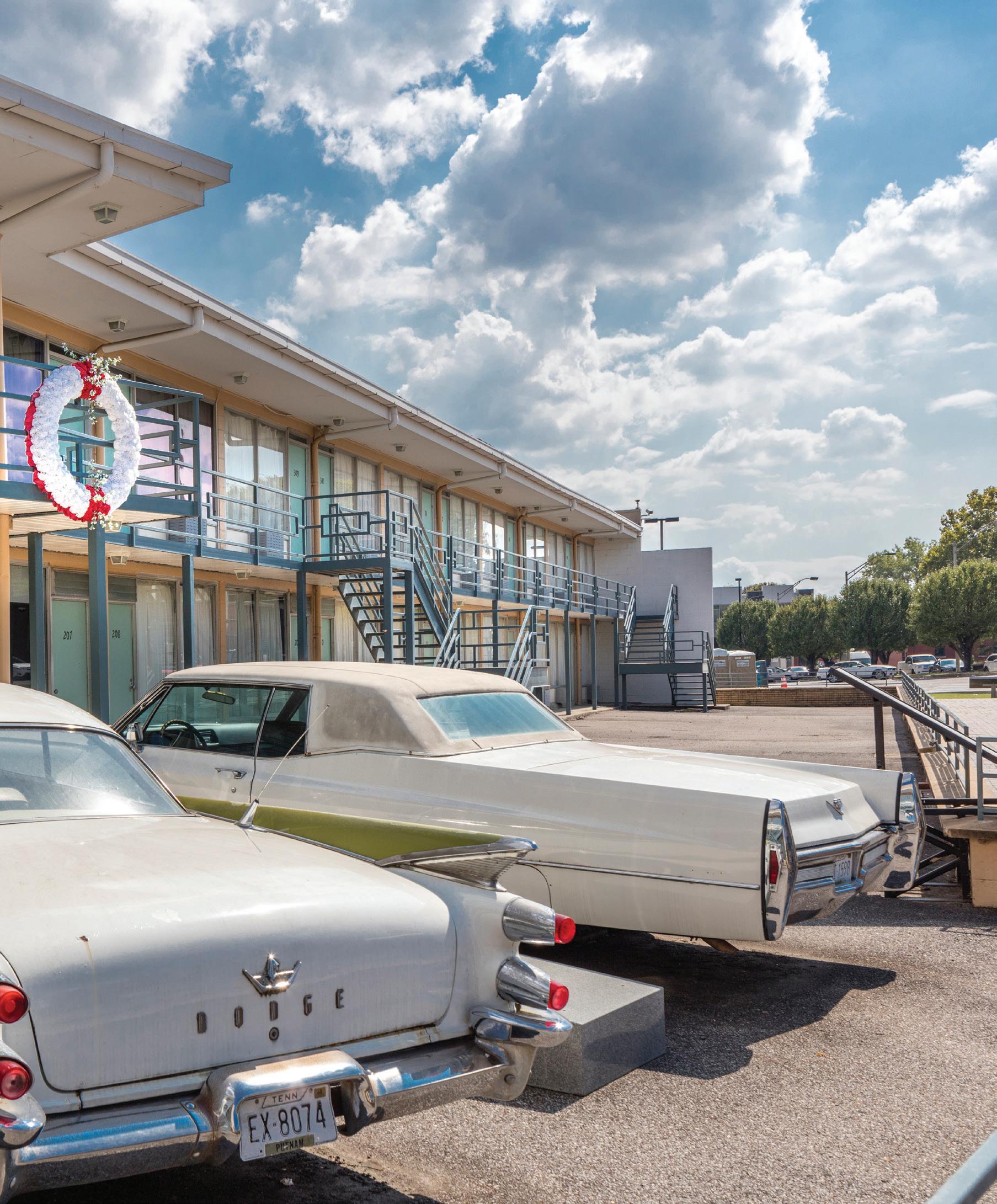
Eloquence & Innocence
The Mid-South honors the loss of Martin Luther King, Jr. and Emmett Till
BY RACHEL CRICK
Atrip through the mid-South introduces travelers to some of the Civil Rights Movement’s most memorable figures and martyrs, from the Little Rock Nine to Martin Luther King Jr. They can also experience the roots of Black culture, with stops at music museums, historic districts and educational institutions.
Beginning in Mississippi’s capital, Jackson, this itinerary takes travelers north to Sumner, then through Tennessee with stops in Memphis and Nashville. It ends with a stop in Louisville, Kentucky.
Courtesy USCRT
CAROLINAS SOUTHEAST I-10 CORRIDOR MIDWEST
Jackson, Mississippi
Mississippi’s capital entices visitors with literature, art and music. Groups can tour cultural attractions such as Malaco Records, the largest blues, gospel and Southern music recording studio in the country; the Mississippi Museum of Art; and the Eudora Welty House and Gardens, a literary house museum. But Jackson’s culture is also deeply intertwined with its Civil Rights heritage. Medgar Evers, a prominent NAACP member and activist, was assassinated in 1963 at his home in Jackson. The quaint, mint-green home was declared a National Historic Landmark and named the Medgar and Myrlie Evers Home National Monument and can be toured. Travelers can also visit the Mississippi Civil Rights Museum, which contains exhibits examining the lives and slayings of prominent figures from the movement, such as Evers.
VISITJACKSON.COM

MAHOGANY MEMPHIS HIGHLIGHTS
MEMPHIS, TENNESSEE
Opened in 2018, Mahogany Memphis is an upscale, Black-owned restaurant showcasing Creole influences throughout its menu to give diners a variety of mouthwatering choices. It serves lunch and dinner (and brunch on the weekends), and some of its most popular menu items include lamb chops, catfish and Cajun fried chicken. Sides such as mac and cheese, loaded smashed potatoes and greens are crowd-pleasers. Visitors can also enjoy a delicious craft cocktail with their meal.
MAHOGANYMEMPHISTN.COM

THE MISSISSIPPI MUSEUM OF ART
Sumner, Mississippi
This small town of Sumner in Tallahatchie County, Mississippi, only has a population of a couple hundred, yet it’s worth visiting for travelers who want to understand the solemn reality of racial injustice during the Civil Rights era. The town explores the tragic story of Emmett Till, a Black 14-year-old boy who was kidnapped and lynched for allegedly offending a white woman. An all-white jury acquitted his murderers. Till’s murder — and the lack of justice for his killers — outraged the nation and sparked an uptick of support and activism for the Civil Rights Movement. Visitors can tour the Tallahatchie County Courthouse — now a museum — where Till’s murder trial was held. Across the street from the courthouse, they will find the Emmett Till Interpretive Center.
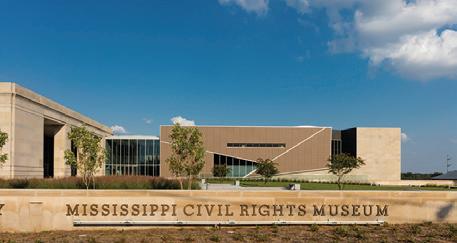

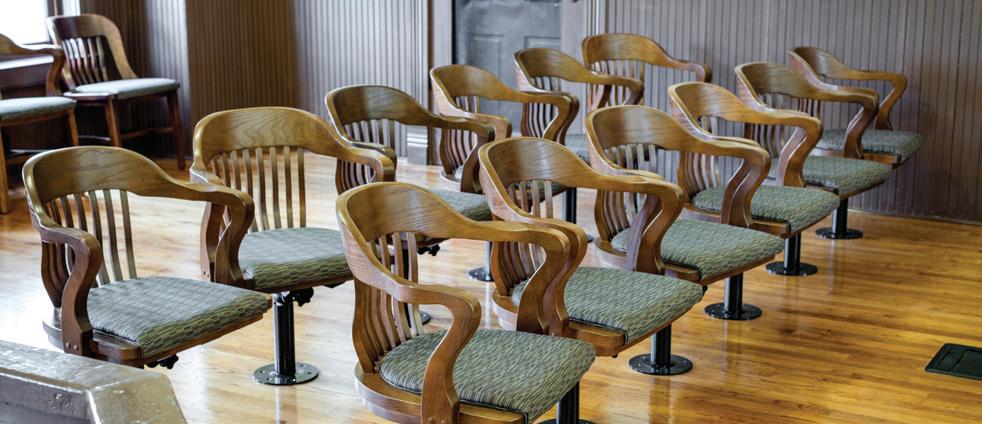
14
Courtesy Visit Mississippi
EMMITT TILL INTERPRETIVE CENTER
Courtesy USCRT
Courtesy USCRT
Courtesy Visit Mississippi
MISSISSIPPI CIVIL RIGHTS MUSEUM
EUDORA WELTY HOUSE AND GARDENS
Photo by Alex Shanksy, courtesy Memphis Tourism

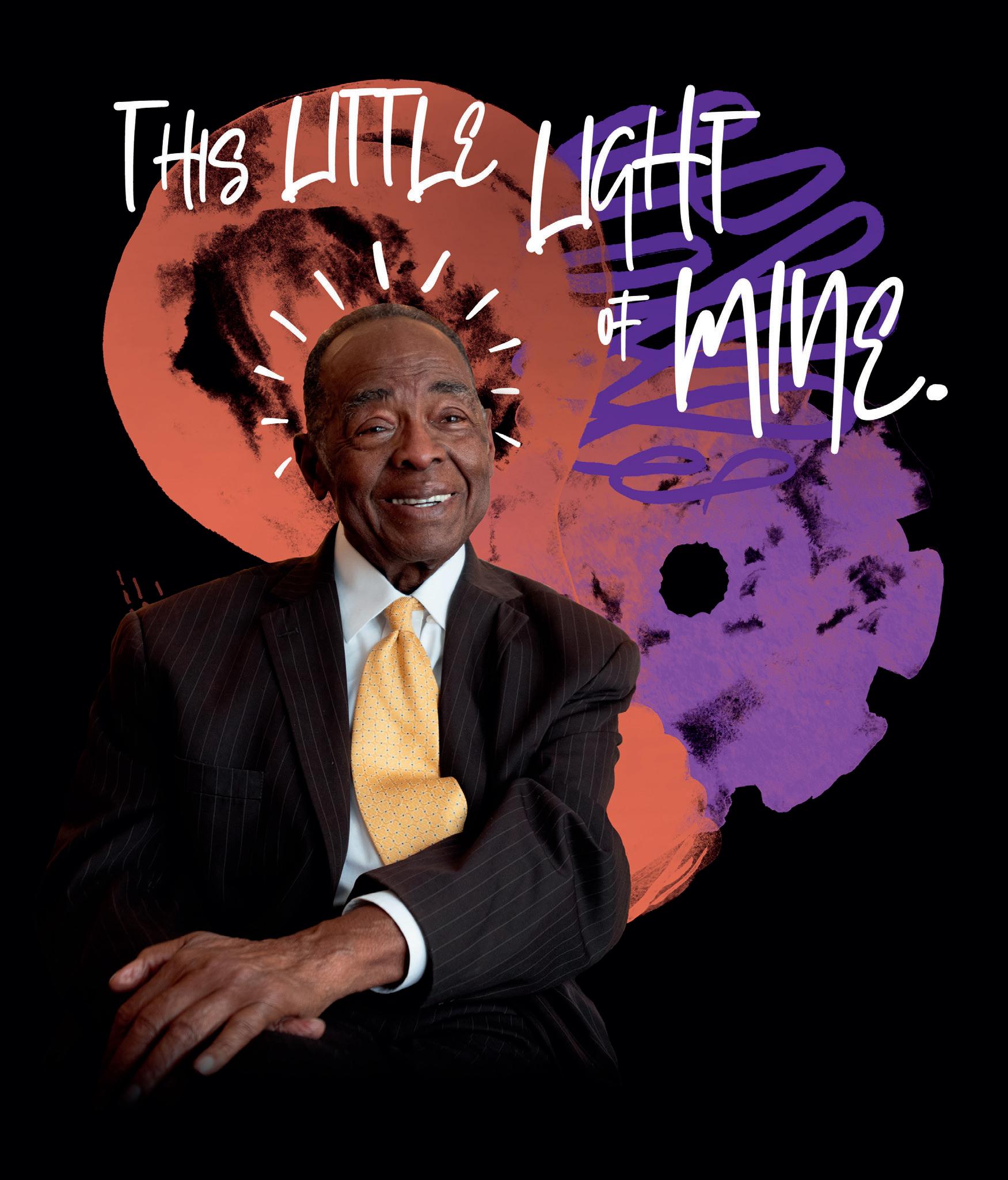
Everywhere you look, you catch glimpses of a bright, shining movement. In the photos dotting the walls of local gathering spots. In the sounds reverberating through the music venues. In the art spaces and museums. And you see it in the faces of the people you meet, like Dr. Robert Smith. We invite you to come to Jackson, Mississippi— City With Soul—and experience the Freedom Movement like nowhere else. Start planning your trip at visitjackson.com.
Dr. Robert Smith, Pioneer of the Freedom Movement
Little Rock, Arkansas
The capital of Arkansas is also known for its connections to former President Bill Clinton, making the Clinton Presidential Library and Museum one of the city’s most popular attractions, along with an eclectic assortment of other museums. Little Rock is also known for the Little Rock Nine, nine Black students who were supposed to attend Little Rock Central High School in 1957. Met with protests by both Arkansas’ governor and its citizens, these students were escorted to their classes by federal troops, bringing them into the center of the effort to integrate schools. They are honored at both the Little Rock Central High School National Historic Site and a memorial at the Arkansas Capitol. For further exploration of the state’s Black history, travelers can visit the Mosaic Templars Cultural Center.
LITTLEROCK.COM

8TH AND ROAST HIGHLIGHTS
NASHVILLE, TENNESSEE
When two best friends got the chance to go into business with their favorite coffee shop and hangout spot, they jumped at the opportunity. And 8th and Roast became what it is today, a Nashville coffee shop and roastery that emphasizes fair trade, high-quality and sustainably sourced coffee. Shop visitors can enjoy everything from drip coffee to a hand-poured cup of joe to specialty coffee drinks. Pastries and hot breakfasts, including quiche and breakfast sandwiches, are served. 8THANDROAST.COM
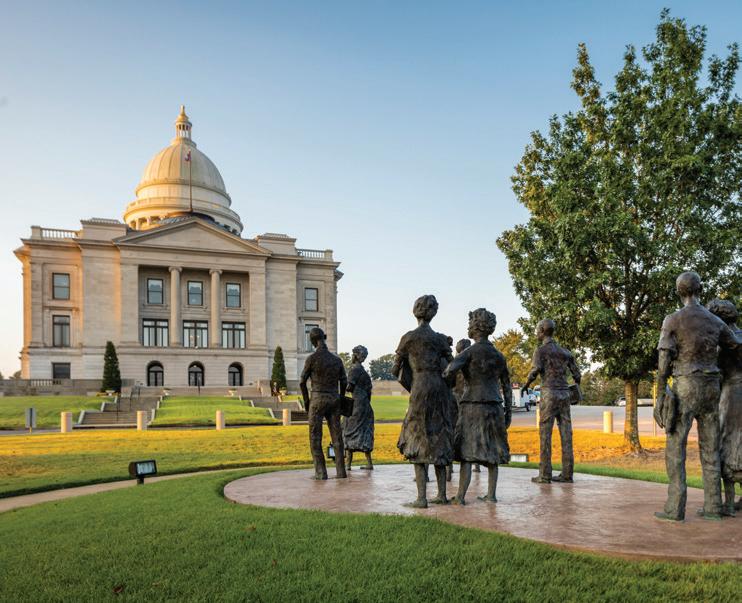
LITTLE ROCK NINE MEMORIAL
Memphis, Tennessee
In the southwest corner of Tennessee, Memphis’ connections to the blues, rock ’n’ roll, jazz and soul music, and musicians like Elvis Presley, Aretha Franklin and B.B. King, provide plenty of musical attractions for groups to explore. These include Beale Street Historic District, where many Blackowned nightclubs, restaurants and shops thrived, and WDIA Radio Station, the first station in the country created for a Black audience. Downtown, the National Civil Rights Museum at the Lorraine Hotel displays exhibits related to the movement, including the hotel room where Martin Luther King Jr. was staying when he was assassinated on the hotel balcony in 1968. Visitors to Memphis will also want to see Mason Temple Church of God in Christ, where King gave his last speech the day before his death.
MEMPHISTRAVEL.COM
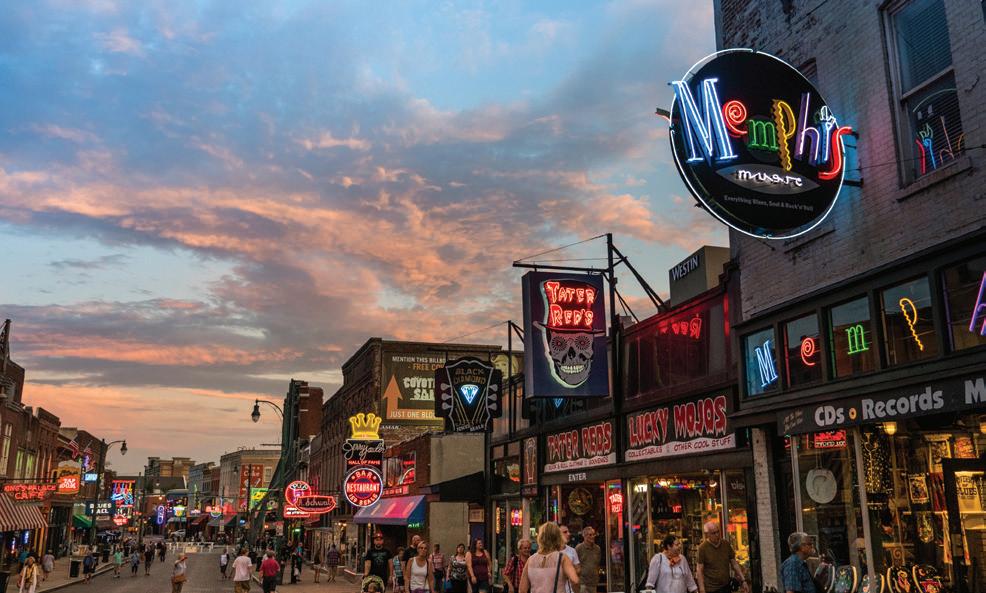
BEALE STREET HISTORIC DISTRICT
16
Courtesy USCRT
Courtesy USCRT
Photo courtesy Nashville CVC
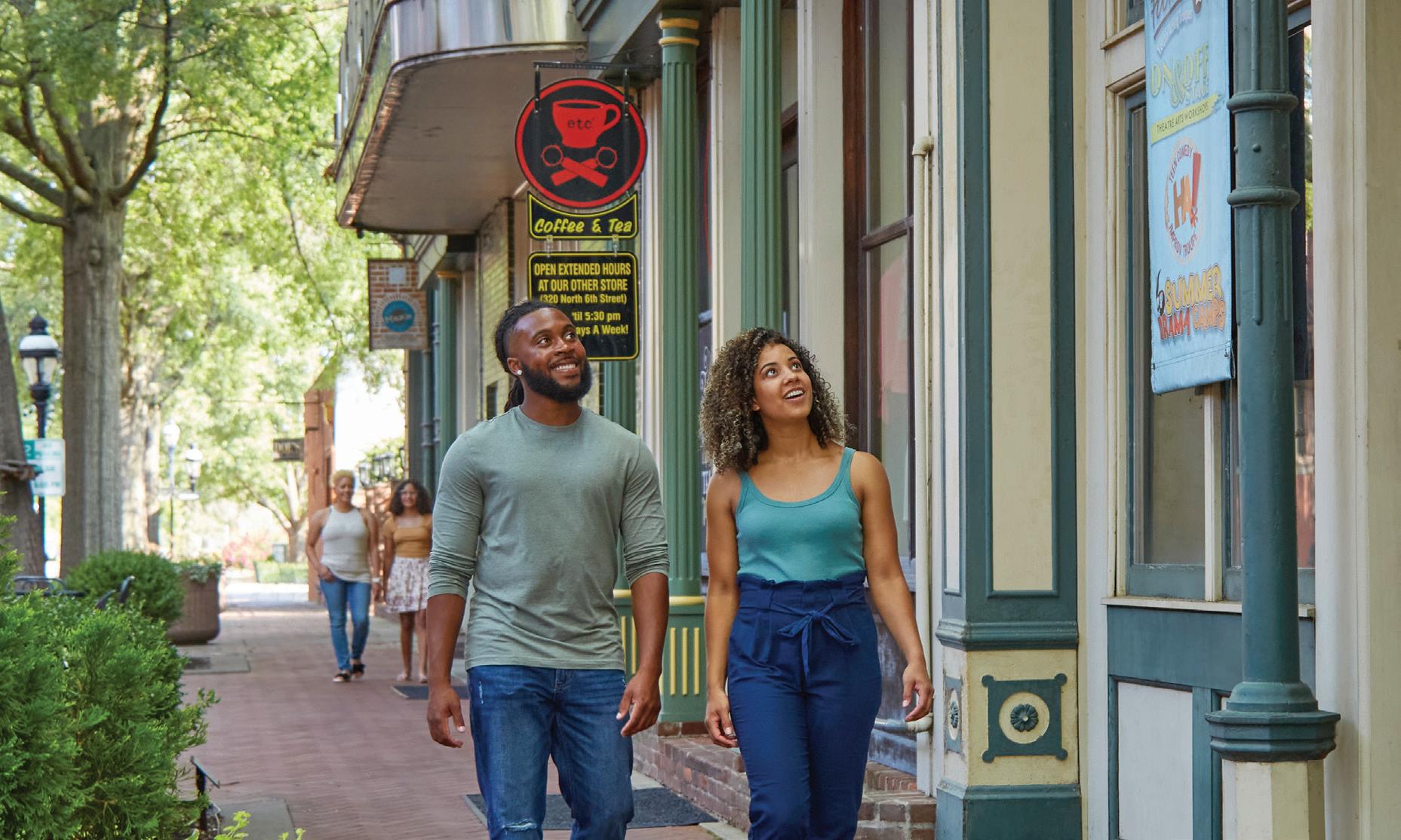

At the heart of America’s inland waterways, you’ll find a sophisticated rivertown that inspires. Paducah, Kentucky, is a confluence of cultural heritage and creativity where art is a way of life.
Celebrating 10 years as a UNESCO Creative City, Paducah is a destination for those who crave rich, authentic cultural experiences!
Immerse yourself in history, art and culture through unique experiences, self-guided tours and historical trails—including the new African American Heritage Driving Tour.
Plan your experience at Paducah.travel
1-800-PADUCAH
EXPERIENCES Signature
Nashville, Tennessee
Known worldwide as Music City, Nashville’s upbeat tempo and laidback rhythm are sure to delight visitors. The city is home to famous attractions such as the Country Music Hall of Fame, complete with rotating exhibits and plenty of programming, but it’s also home to the National Museum of African American Music. Other related sites include Clark Memorial United Methodist Church, where Martin Luther King Jr. held the 1961 annual Southern Christian Leadership Conference meeting. There’s also Fisk University, founded in 1866 to educate Black students. It’s the city’s oldest institution for higher education and the first historically Black college to be accredited by the Southern Association of Colleges and Schools. Alumni include Ida B. Wells and John Lewis.
VISITMUSICCITY.COM

ROOTS 101 MUSEUM HIGHLIGHTS
LOUISVILLE, KENTUCKY
The Roots 101 Museum was founded in 2020 to educate visitors on the history, struggles and accomplishments of African Americans, as well as to highlight Black culture, art and music. The museum, located in downtown Louisville, features exhibits from African art and the origins of Black music in America to the crimes perpetrated by hate groups. It frequently hosts community events and is also the site of the city’s Breonna Taylor Memorial.
ROOTS-101.ORG
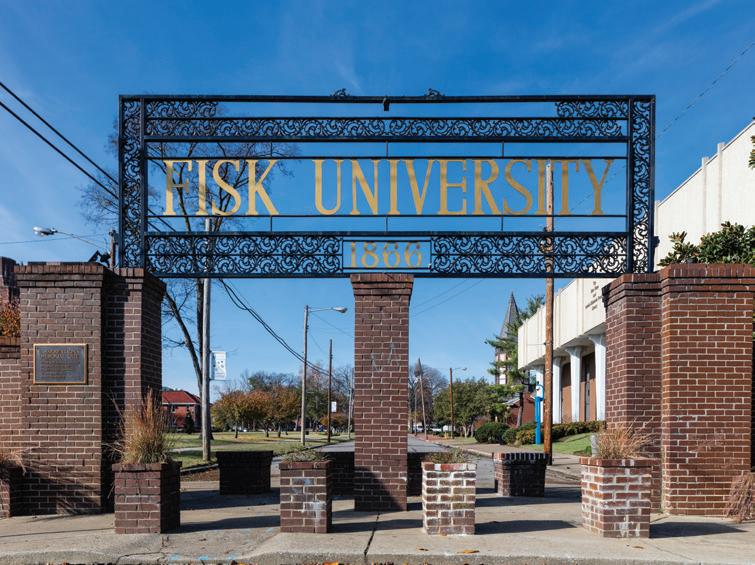
FISK UNIVERSITY
Louisville, Kentucky
Louisville is Kentucky’s largest city and comes with plenty of opportunities to experience the essence of the state’s culture. Some of its most popular offerings include trips to Churchill Downs and the Derby Museum, as well as outings to Whiskey Row, a preserved historic district boasting bourbon distilleries and experiences. It also has two Civil Rights sites: the Muhammad Ali Center, which lets visitors explore the legacy of the famed athlete, activist and philanthropist; and the Louisville Downtown Civil Rights Trail, which marks 11 of the existing locations in the city that were significant to the Civil Rights Movement, including places where activists staged demonstrations to campaign against segregation. Travelers can complete an educational, self-guided tour with stops at each.
GOTOLOUISVILLE.COM


18
Courtesy USCRT
Courtesy USCRT
Courtesy USCRT
THE NATIONAL MUSEUM OF AFRICAN AMERICAN MUSIC IN NASHVILLE
A LOUISVILLE CIVIL RIGHTS TRAIL MARKER
Photo courtesy Roots 101 Museum

EXPERIENCE HISTORY WHERE IT HAPPENED
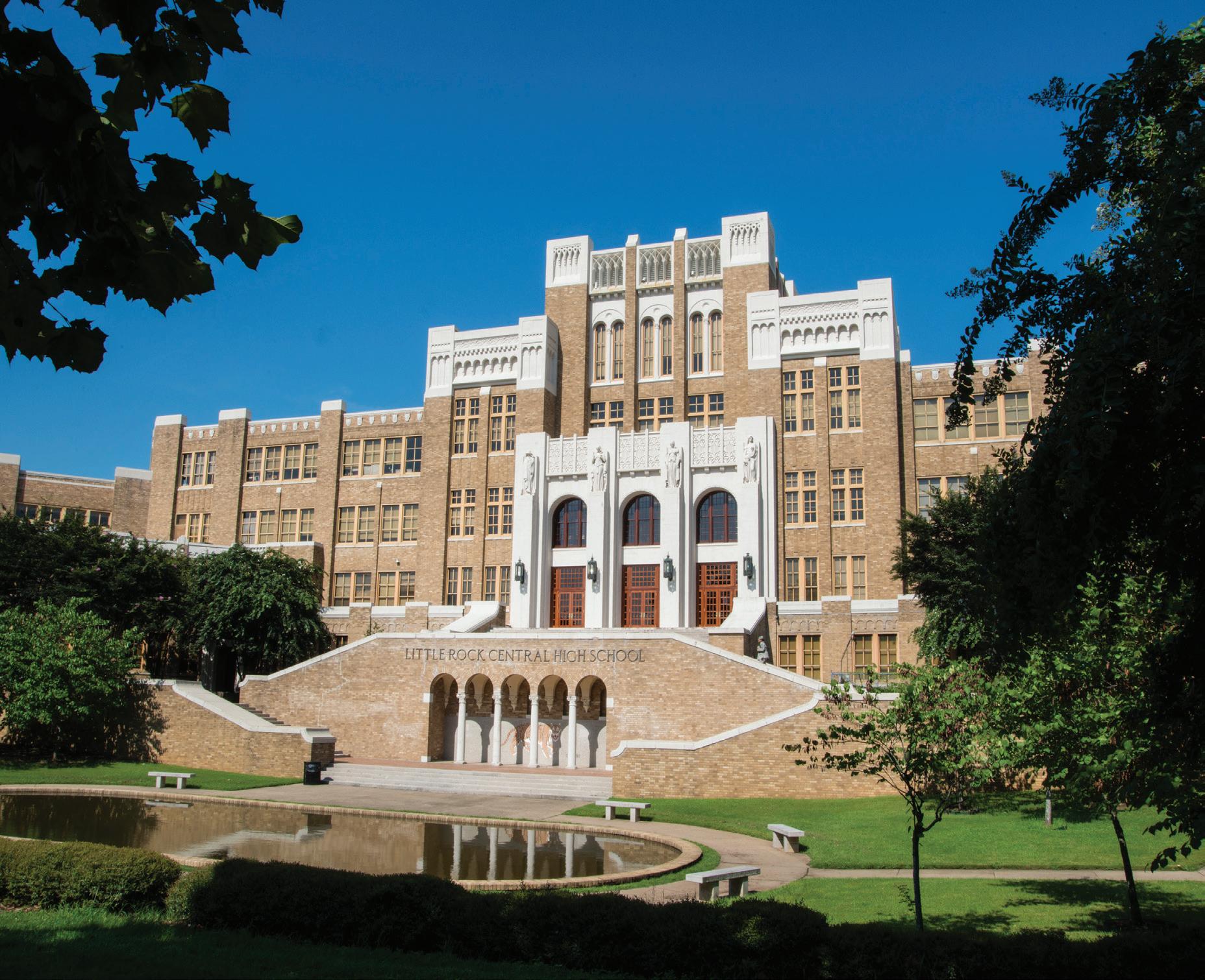
2024 marks the 70th anniversary of the U.S. Supreme Court’s landmark ruling in Brown v. Board of Education, which ended racial segregation in schools. When the Little Rock Nine courageously integrated Central High School three years later, they became symbols of bravery to inspire a nation. Walk in their shoes on this historic anniversary in Little Rock, where you’ll find rich experiences that illuminate the African American struggle for civil rights. Learn more at CivilRightsTrail.com and visit Arkansas.com to plan your trip today.
Harpers Ferry
MID-SOUTH THE VIRGINIAS & D.C.

Fredericksburg
Farmville
Danville
Washington D.C.
Richmond
CONSTRUCTED IN 1939 TO EDUCATE
HIGH SCHOOL IS NOW A MUSEUM EXPLORING THE DESEGREGATION OF PUBLIC EDUCATION.
BLACK STUDENTS, ROBERT RUSSA MOTON
From the Civil War to Civil Rights
The Virginias and D.C. commemorate the struggle for equality
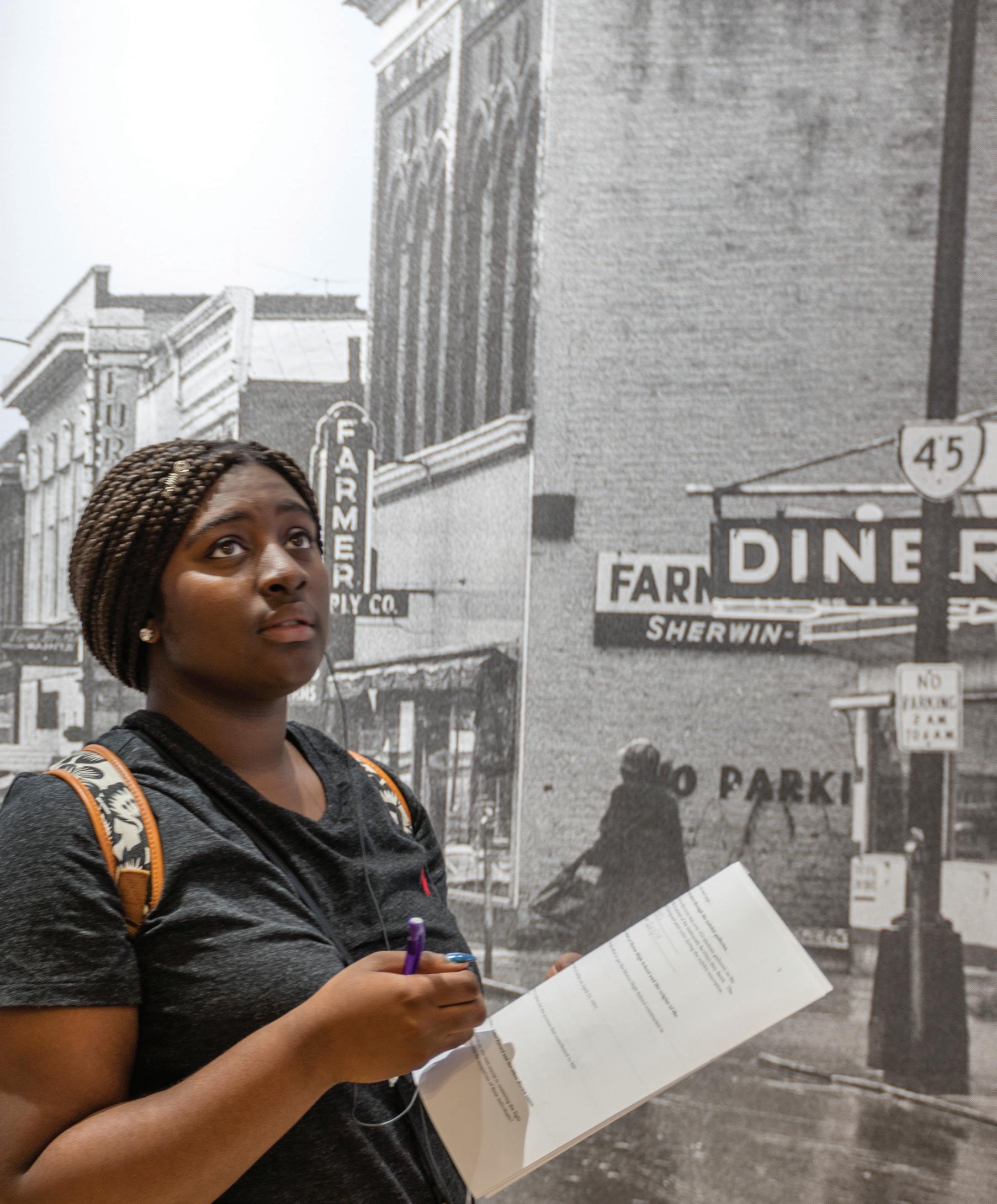 BY RACHEL CRICK
BY RACHEL CRICK
Stretched between the Appalachian Mountains and the Atlantic Ocean, the Virginias are rich in both history and beauty. Settled by the British in the 17th century, the area was the first of the original Colonies. As such, it’s not only Civil Rights history visitors will find here — the states also played an integral role in the Civil War.
This itinerary begins at the far eastern tip of West Virginia, where two rivers converge around the idyllic Harpers Ferry. Then, it takes travelers west to our nation’s capital, before heading south with stops in Fredericksburg, Richmond, Farmville and Danville.
Courtesy USCRT
CAROLINAS SOUTHEAST I-10 CORRIDOR MIDWEST
Harpers Ferry, West Virginia
Set in a breathtaking West Virginia national park and surrounded on two sides by rivers, Harpers Ferry is a nature lover’s paradise. In between outdoor activities like hiking and biking, visitors can walk around the picturesque 19th century downtown and check out its shops and eateries. Harpers Ferry National Historical Park is saturated in Civil War history. The town, thanks to its position between two rivers and its mountain views of three states, had many strategic advantages during the war. To learn more about the role it played, travelers can visit John Brown’s Fort, where the radical abolitionist attempted an unsuccessful armed revolt against slavery in 1859; this revolt is said to have foreshadowed the impending war. There’s also plenty of other significant historical sites to find on a self-guided tour of the town.
WHEREALMOSTHEAVENBEGINS.COM

MODERN HOMESTEAD HIGHLIGHTS
REEDSVILLE, WEST VIRGINIA
A couple hours outside of Harpers Ferry, Modern Homestead is a collection of restored guest houses where travelers can find luxurious lodging. These quaint, restored cottages are surrounded by beautiful gardens and a seasonal green house, and they’re not far from historic West Virginia sites and shopping. Guests can opt for spa services during their stay, or take advantage of the on-site café, which offers cozy specialty coffee drinks, hot teas and cider, as well as fresh-baked pastries.
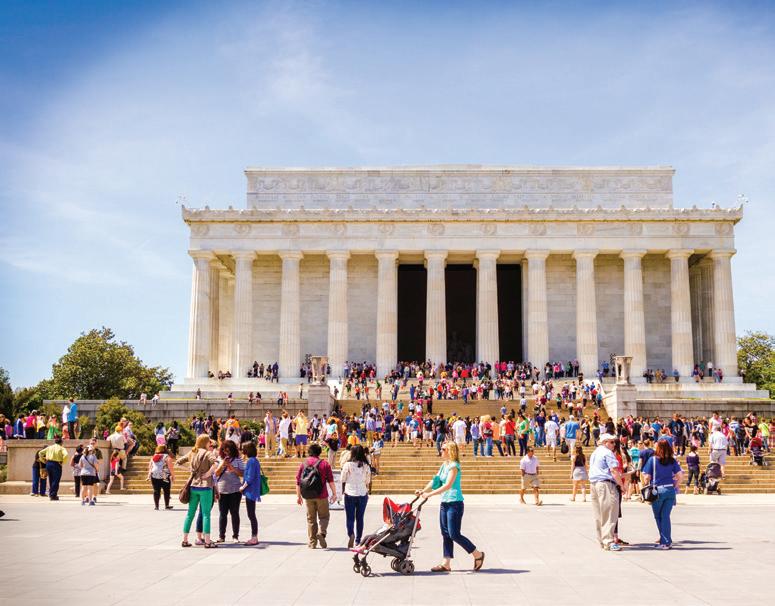
LINCOLN MEMORIAL
Washington, D.C.
As the nation’s capital, Washington, D.C. possesses an unrivaled collection of historic monuments, nationally recognized landmarks and world-class museums. Highlights include seeing the monuments on the National Mall, catching a production in the city’s exciting theater scene, exploring any of the Smithsonian museums, visiting the Library of Congress and touring government buildings, such as the White House. As a hotspot of U.S. history, it should come as no surprise that there are several Civil Rights Movement sites. These include memorials honoring pivotal figures in the centuries-long battle for racial equality, including the Lincoln Memorial and the Martin Luther King Jr. Memorial. Travelers can also visit the National Museum of African American History and Culture to learn about and appreciate the roots of Black culture.
WASHINGTON.ORG
Fredericksburg, Virginia
Steeped in history dating back to Colonial times, the town of Fredericksburg, Virginia, offers an engaging combination of old and new. From restored 18th century buildings, military parks and Civil War-era cemeteries to craft breweries, art galleries and upscale restaurants, this small town near D.C. has plenty of variety. In addition to Civil War cemeteries and battle sites, it also has a brand-new Fredericksburg Civil Rights Trail, “Freedom, a Work in Progress,” which was created through a partnership between the city and the University of Mary Washington. Stops on the trail include the Fredericksburg Area Museum, the Slave Auction site and the university’s campus, among others. Following the trail to find its 21 stops teaches visitors more about the area’s extensive Civil Rights history.
22
FXBG.COM
Courtesy Washington.org
MODHOMESTEAD.COM
Photo by Trellis Smith, courtesy Modern Homestead


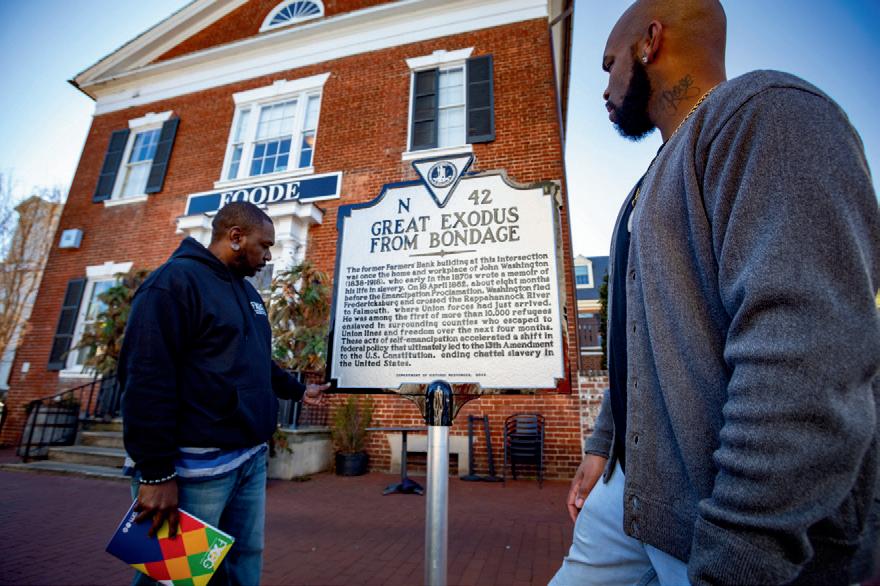

RICHMOND, VIRGINIA
Founded by a husband-and-wife team, the Lindseys, Lillie Pearl serves traditional soul food with a modern twist in Richmond, Virginia. The menu features craft cocktails and elevated mains such as braised short ribs, lobster, shrimp and grits, and pork chops smothered in a smoked bacon shallot cream sauce. Sides, such as baked mac and cheese and collard greens, are popular with diners. And desserts, such as the peach cobbler bread pudding, offer a spectacular finish to each meal.
LILLIEPEARLRVA.COM



The
in Fredericksburg, Virginia follows the stories and sites of the local Civil Rights movement and highlights the role of Black residents in Fredericksburg’s history.

23
LILLIE PEARL HIGHLIGHTS
Photo courtesy Lillie Pearl
Courtesy Visit FXBG
FxbgCivilRightsTrail.com 540-373-1776
A WORK IN PROGRESS
A FREEDOM RIDERS HISTORICAL MARKER IN FREDERICKSBURG
FREEDOM,
Civil Rights Trail
Richmond, Virginia
Virginia’s capital city has an impressive arts and culture scene, even possessing one of the country’s largest comprehensive art museums, the Virginia Museum of Fine Arts. History buffs will enjoy the city’s collection of Civil War museums and the Virginia Museum of History and Culture. Lewis Ginter Botanical Garden is an oasis of natural beauty. At the state Capitol, travelers can visit a significant Civil Rights Movement site, the Virginia Civil Rights Memorial. The memorial depicts, in a bronze and marble statue, Barbara Johns and other students who walked out of school in protest of segregation. Their cases were later joined with others and brought to the Supreme Court as the landmark Brown v. Board of Education case.
VISITRICHMONDVA.COM

FOODE HIGHLIGHTS
FREDERICKSBURG, VIRGINIA
Located in historic downtown Fredericksburg, Foode opened in 2011. Founding partner and executive chef Joy Crump was a competitor on Top Chef in 2014; that’s why it’s no surprise the menu is exciting, bold and delicious. With an emphasis on local, seasonal ingredients, its menu often changes, but the restaurant offers brunch, lunch and dinner, alongside specialty cocktails and delicious desserts. Some of its most popular dishes are elevated classics, including chicken and waffles, burgers, and shrimp and grits.
FOODEFREDERICKSBURG.COM
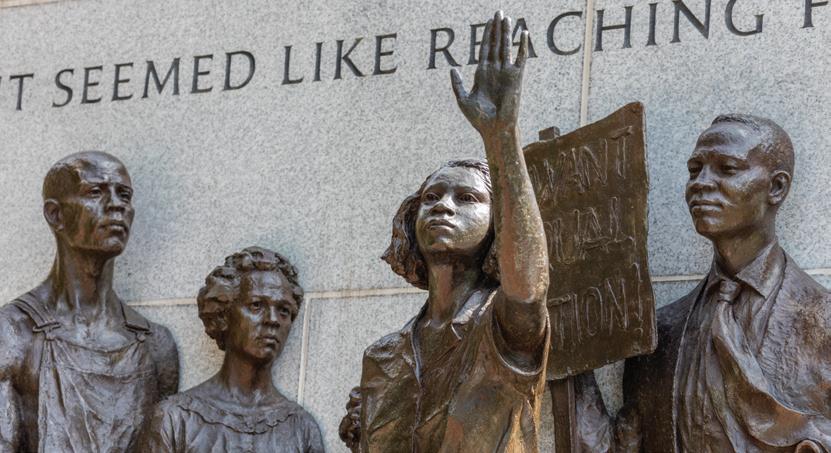
VIRGINIA CIVIL RIGHTS MEMORIAL
Farmville, Virginia
Home to both Hampden-Sydney College and Longwood University, Farmville, Virginia, is a quaint college town with a storied history. Opportunities for outdoor recreation abound at High Bridge Trail State Park, an 1853 bridge that was damaged during Confederacy’s retreat at the end of the Civil War. Farmville also has plenty of historic buildings, including churches and homes. Another building of significance, Robert Russa Moton High School, was constructed in 1939 to educate Black students. Today, it’s a National Historic Landmark. When two students led a walkout protest at the school, it became a Civil Rights Movement site. It now functions as a museum, with exhibits honoring the fight for the desegregation of and improved access to public education.
VISITFARMVILLE.COM
Danville, Virginia
On Virginia’s southern border, the small town of Danville was once the Confederacy’s last standing capital. It has plenty of Civil War and Civil Rights era history for history buffs to explore, as well as some newer additions, like breweries, wineries, shops and restaurants. The town’s museums are some of its most popular attractions, including the Danville Science Center and the Danville Museum of Fine Arts and History. Located in the building that once housed the Danville Public Library, the latter museum has a permanent exhibit dedicated to a protest that occurred at the library. In 1960, 16 Black students entered the library to protest its “whites only” policy. They were refused service, and later, both the city’s libraries closed. Today, the museum exhibit includes accounts from the original protestors.
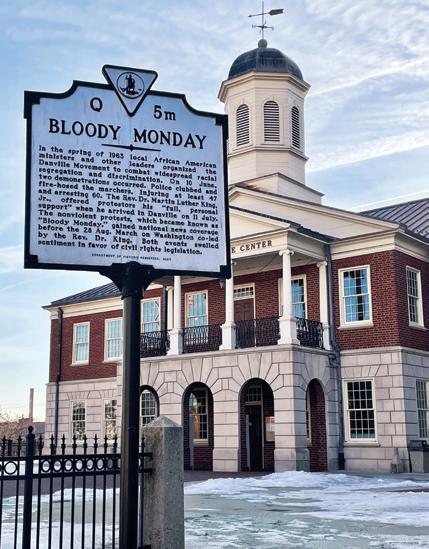
24
VISITSOSI.COM
Courtesy USCRT
Courtesy Virginia Tourism Corporation
Photo courtesy Visit FXBG
BLOODY MONDAY HISTORIC MARKER
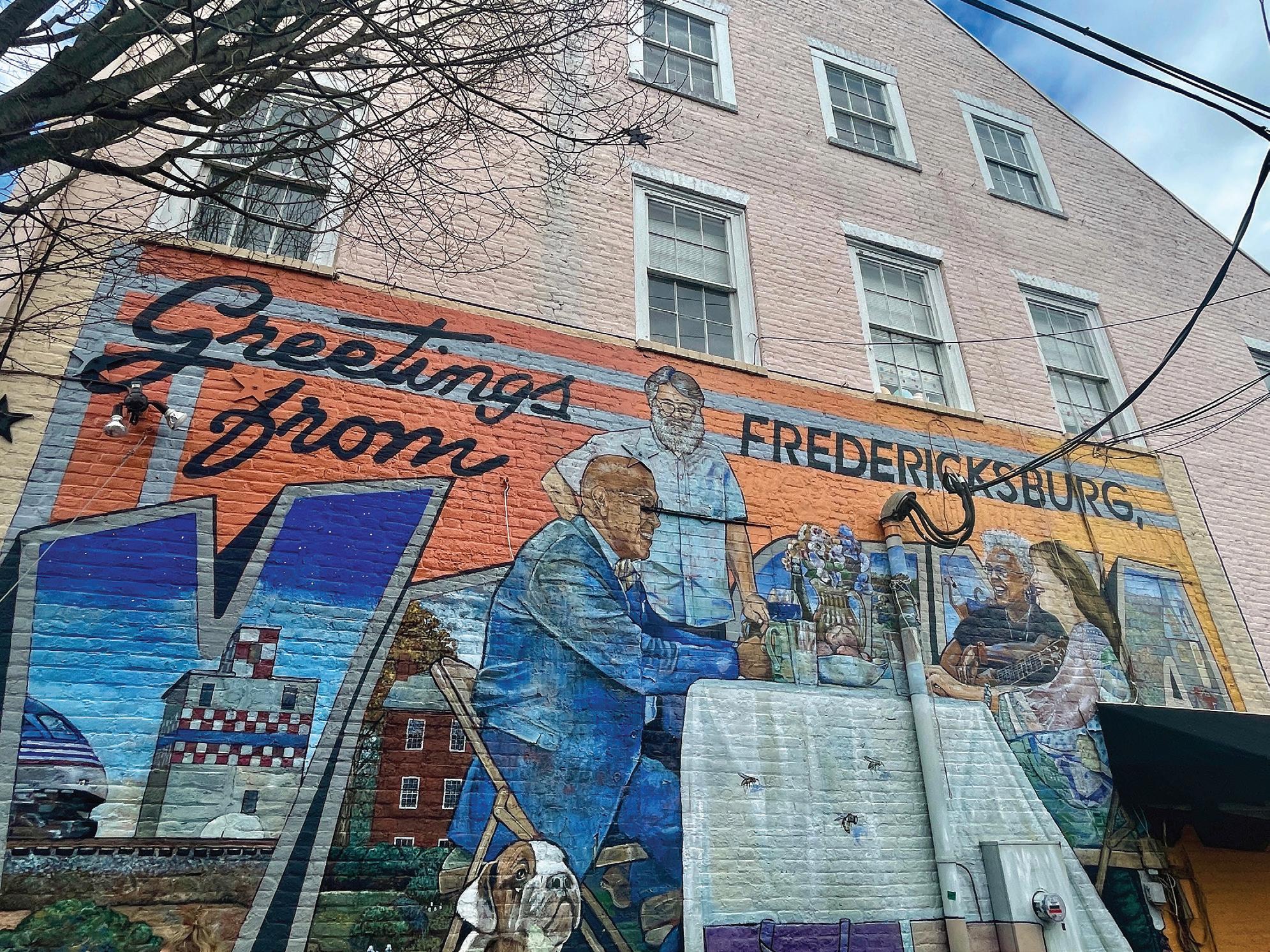
Virginia is the historical home of revolutionaries, brave thinkers and passionate doers of all kinds. Some of the world’s greatest achievements happened in Virginia, but for too long, the incredible stories of bravery, innovation and passion of Black Virginians have gone unshared. Today, Virginia is committed to embracing those once silenced voices and telling their stories honestly and completely. Learn more at virginia.org/blackhistory
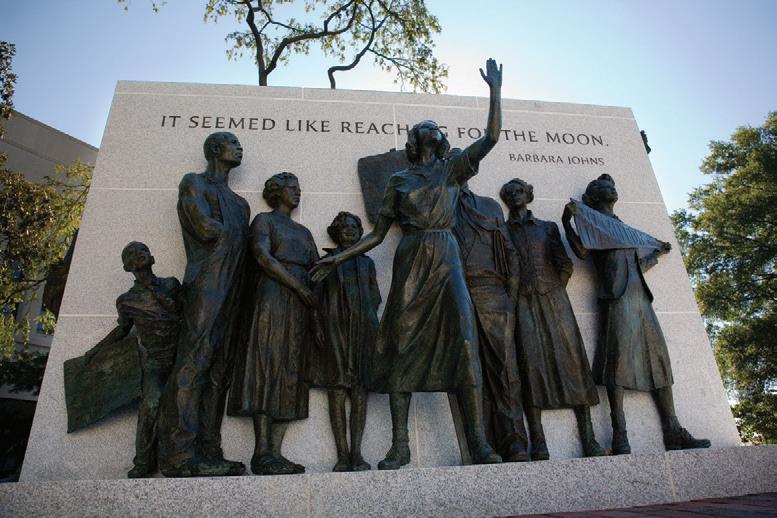
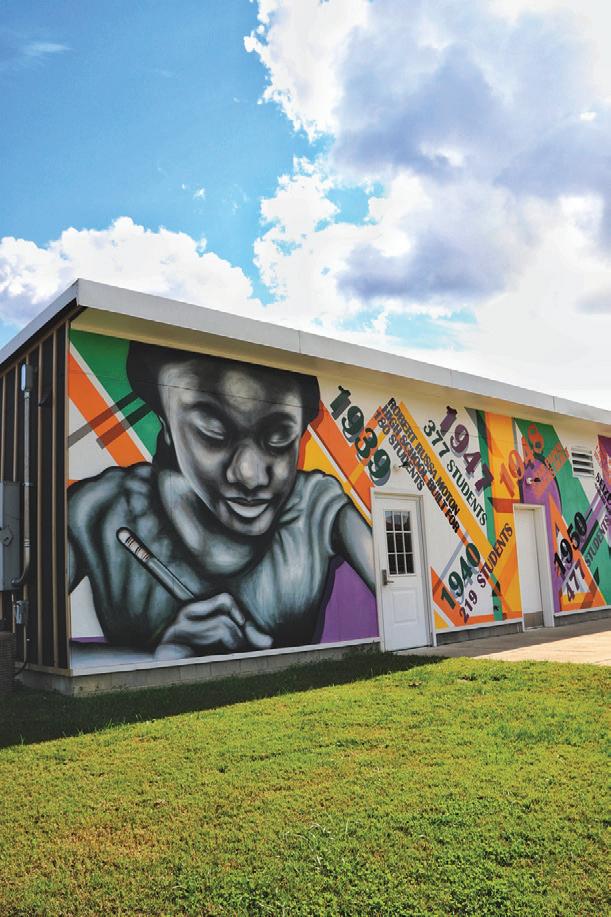
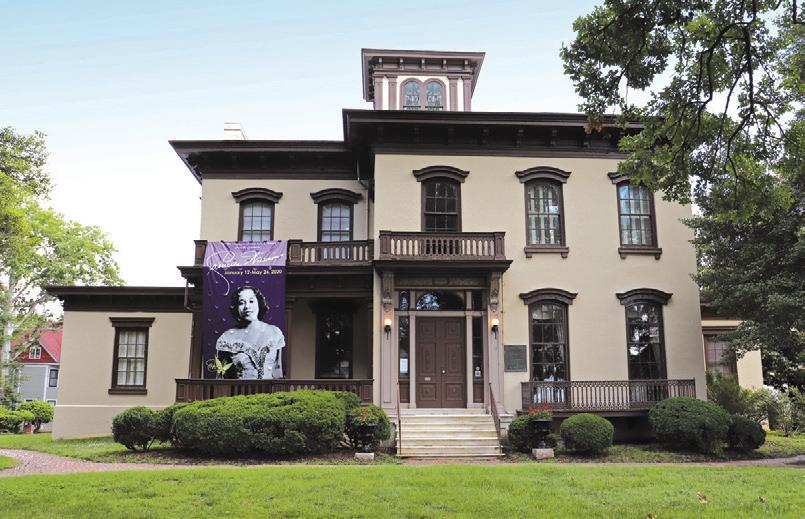 Sammy T’s Fredericksburg, Virginia
Sammy T’s Fredericksburg, Virginia

AT THE CIVIL RIGHTS MEMORIAL CENTER IN MONTGOMERY, VISITORS CAN VIEW EXHIBITS ABOUT THE CIVIL RIGHTS MOVEMENT AND ITS HEROES. MID-SOUTH THE VIRGINIAS & D.C.
Birmingham Selma
Montgomery Albany
Atlanta

Faith Triumphs Over Violence
The Southeast memorializes its marches and martyrs
BY RACHEL CRICK
The landmarks and memorials dotting the Southeast provide a testament to the Civil Rights Movement’s key figures and bear witness to its bloodiest conflicts. They also enshrine the places where the fight for justice and equality was victorious.
From the Edmund Pettus Bridge to the boyhood home of Martin Luther King Jr., this itinerary spans two states and encompasses two state capitals. It begins in Birmingham, Alabama, then takes travelers south to Selma. From there, the path winds east to Montgomery and then to Albany, Georgia. The final stop is Atlanta.
Courtesy USCRT
CAROLINAS SOUTHEAST I-10 CORRIDOR MIDWEST
Birmingham, Alabama
Founded as an industrial hub for iron and steel during the Reconstruction period, Birmingham has since become Alabama’s most populous city. Visitors will enjoy its culinary scene and outdoor attractions, but many of the city’s most popular attractions relate to its role in the Civil Rights Movement, during which it became a backdrop to much of the violence and tension in the region. Visitors can tour the Birmingham Civil Rights Institute, a museum chronicling the movement’s struggles and triumphs. They can also see the places of worship that were integral to the movement, such as 16th Street Baptist Church, the site of the 1963 bombing that killed four young Black girls, and Bethel Baptist Church, which was the headquarters for the Alabama Christian Movement for Human Rights.
BIRMINGHAMAL.ORG

BIRMINGHAM CIVIL RIGHTS INSTITUTE

Selma, Alabama
Selma is steeped in the history of the Civil Rights Movement, frequently finding itself in the national spotlight because of its relevance to voting rights campaigns. One of the city’s Civil Rights Trail sites, since named a National Historic Landmark, is the Edmund Pettus Bridge, the site of the infamous Bloody Sunday beatings. These horrific beatings, carried out by state troopers against 600 voting rights advocates, were televised and are credited with an increase in public support for the movement. The Selma Interpretive Center, next to the bridge, explores the movement with exhibits and marks the beginning of the Selma to Montgomery National Historic Trail. When in Selma, visitors can tour the National Voting Rights Museum and Institute to hear from volunteer guides with firsthand accounts of the fight for voting rights.
SELMAALABAMA.COM

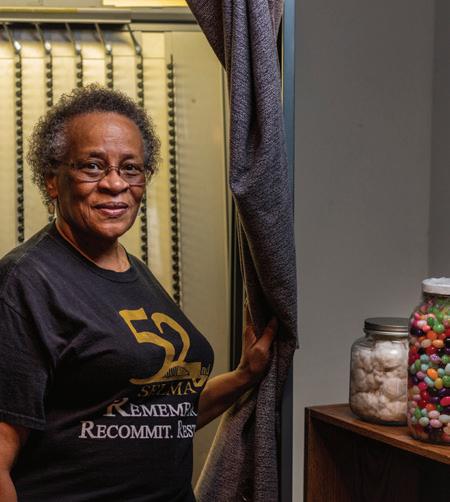

28
Courtesy USCRT
Courtesy USCRT
Courtesy USCRT
SELMA INTERPRETIVE CENTER NATIONAL VOTING RIGHTS MUSEUM AND INSTITUTE


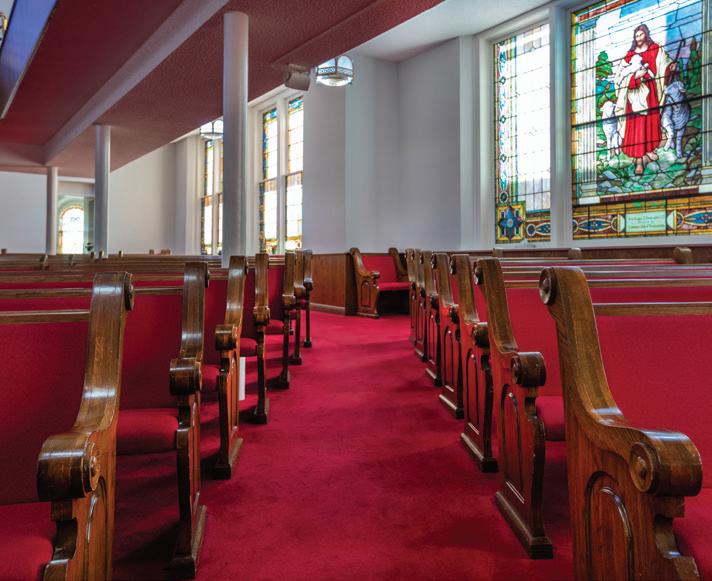
16TH STREET BAPTIST CHURCH
When in Selma, visitors can tour the National Voting Rights Museum and Institute to hear from volunteer guides with firsthand accounts of the fight for voting rights.


YO’ MAMA’S RESTAURANT HIGHLIGHTS


BIRMINGHAM, ALABAMA
Serving brunch and lunch in downtown Birmingham, this Black-owned, woman-owned restaurant’s roots can be traced back to 2007. What began as a popular vendor serving chicken and fish at the Seabreeze Jazz Festival in Florida eventually became a brick-and-mortar restaurant in Alabama. Today, the restaurant delights visitors with made-from-scratch meals. Customer favorites include chicken and waffles, shrimp and grits, fish tacos, barbecue burgers and chicken wings.
YOMAMASRESTAURANT.COM
29
Courtesy USCRT
16TH STREET BAPTIST CHURCH IN BIRMINGHAM
Courtesy USCRT
EDMUND PETTUS BRIDGE
NATIONAL VOTING RIGHTS MUSEUM AND INSTITUTE
Courtesy USCRT
Photo courtesy Yo’ Mama’s Restaurant
Montgomery, Alabama
As Alabama’s capital, Montgomery bore witness to many pivotal moments and figures within the Civil Rights Movement. The city is even known as the movement’s birthplace, thanks to the many protests and demonstrations held there, from the Montgomery Bus Boycott to the Selma-to-Montgomery March. There are abundant opportunities for visitors to explore its rich history, from touring the capitol to visiting iconic trail sites such as the Civil Rights Memorial Center, which features four galleries dedicated to highlighting the movement and its heroes. Several additional museums, such as the Freedom Rides Museum and the Rosa Parks Museum, tell the story of the bus boycott. There’s also the Dexter Avenue King Memorial Baptist Church, where Martin Luther King Jr. served as pastor for several years.
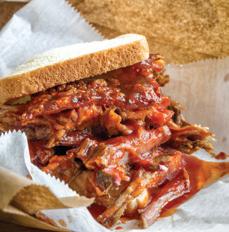
LANNIE’S BAR-B-Q SPOT
SELMA, ALABAMA
Lannie’s Bar-B-Q Spot has been serving Selma residents barbecue since the 1940s. During the Civil Rights Movement, it doubled as a gathering place for the community, meaning it saw (and fed) many of the movement’s key leaders. It’s still famous for its soul food, including barbecue pork, fried catfish, fried okra, collard greens, potato salad, and of course, its beloved barbecue sauce, passed down from generation to generation and guarded as a family secret.
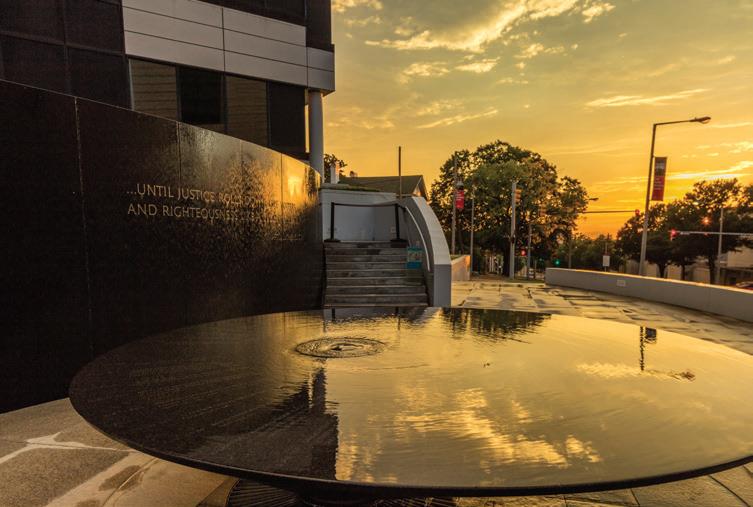
CIVIL RIGHTS MEMORIAL CENTER
Albany, Georgia
Located in Georgia’s Southwest corner, Albany is a hub for nature and Native American culture. Its major attractions include the Chehaw Park and Zoo, Flint RiverQuarium, and Thronateeska, a three-museum campus exploring history and science in the region. Travelers should also visit the Ray Charles Plaza, featuring a memorial to the late musician, and explore the city’s extensive Civil Rights heritage. One trail site, the Albany Civil Rights Institute, is located in Old Mount Zion Baptist Church, the birthplace of many activist and advocacy groups, and features a large database of research and resources detailing the Civil Rights Movement in Albany. The city is also home to Shiloh Missionary Baptist Church, where Martin Luther King Jr. spoke to a crowd following his speech at Old Mount Zion Baptist Church.
VISITALBANYGA.COM
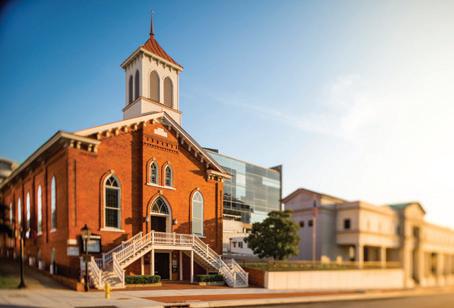
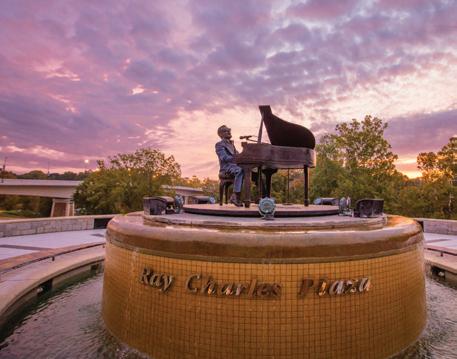
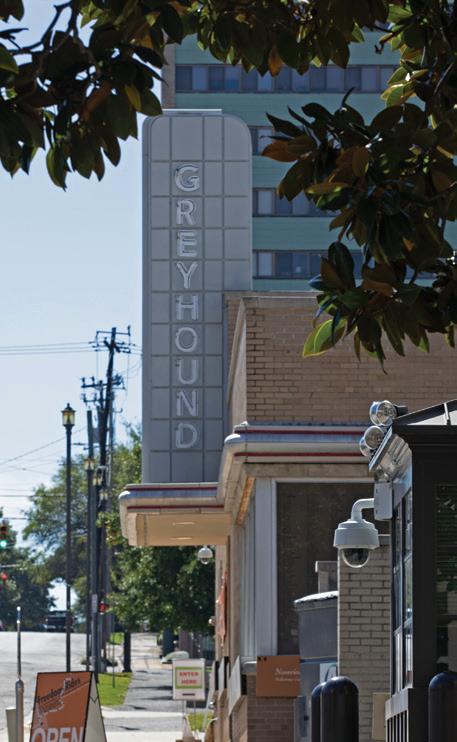
FREEDOM RIDES MUSEUM
30
EXPERIENCEMONTGOMERYAL.ORG
By Ralph Daniel, courtesy Explore Georgia Courtesy Alabama Tourism
HIGHLIGHTS
RAY CHARLES MEMORIAL IN ALBANY
Courtesy USCRT
Courtesy USCRT
MONTGOMERY’S DEXTER AVENUE KING MEMORIAL BAPTIST CHURCH
Photo by Art Meripol, courtesy Alabama Tourism


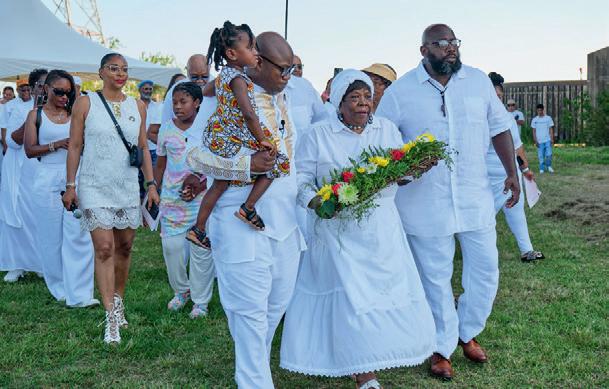

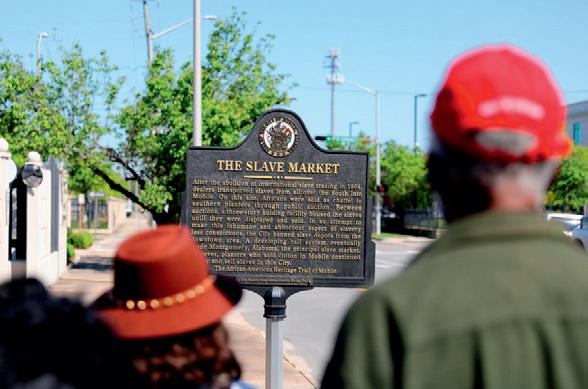


THE LAST AMERICAN SLAVE SHIP A STORY OF SURVIVAL AND RESILIENCE Explore the Clotilda, cultural heritage and more at mobile.org.
THE CLOTILDA
Atlanta
From touring the World of Coca Cola to visiting the Georgia Aquarium, Atlanta has no shortage of activities. There’s film history, art and a diverse food scene, which travelers can experience with a trip to one of its many food halls. But Atlanta also has a rich Civil Rights history, being the birthplace of one of the movement’s most pivotal figures, Martin Luther King Jr. King’s birth home can be found within the Martin Luther King Jr. National Historical Park, a must-see landmark that also features the church where King was baptized, Ebenezer Baptist Church. Another relevant site is the National Center for Civil and Human Rights, a museum that takes visitors through a range of exhibits that document the movement and the global fight for human rights.
DISCOVERATLANTA.COM
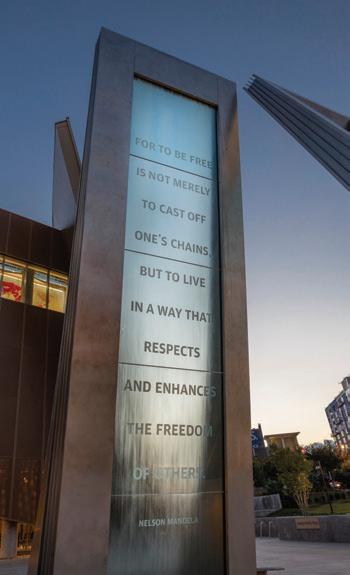
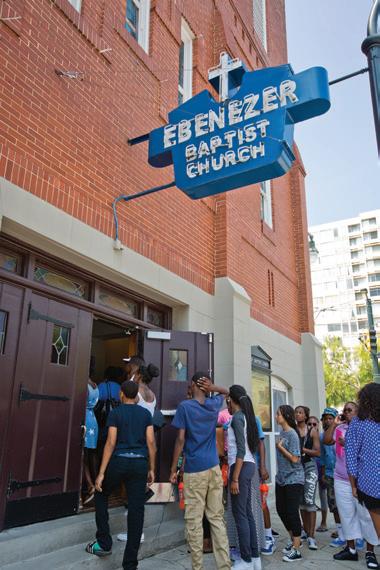
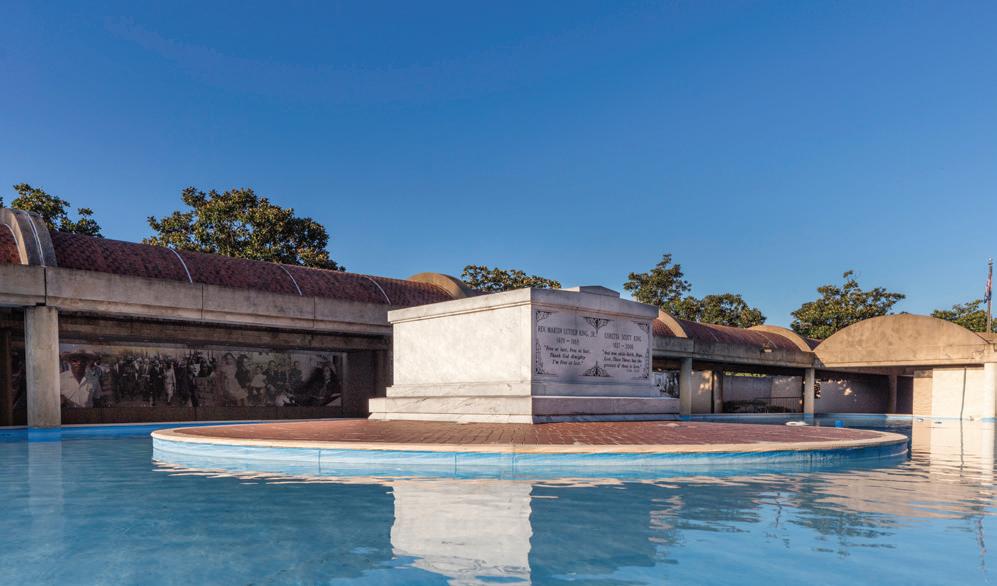


MADAM C.J. WALKER MUSEUM HIGHLIGHTS
ATLANTA
MARTIN LUTHER KING JR.
NATIONAL
HISTORICAL PARK
of Madam C.J. Walker, an entrepreneur and philanthropist who became the first self-made American female millionaire. Walker invented and sold haircare products and cosmetics for Black women. She was also an activist. The building housing the museum was once one of Walker’s beauty shops and contains vintage hair tools and exhibits dedicated to Walker. The floor above the beauty shop once belonged to WERD, the first Black-owned radio station in the country, and is now an integral part of the museum.
MADAMECJWALKERMUSEUM.COM
32
Courtesy USCRT
This Atlanta museum honors the legacy
Courtesy USCRT
Photo courtesy Madam C.J. Walker Museum
Courtesy USCRT
By Ralph Daniel, courtesy Explore Georgia
EBENEZER BAPTIST CHURCH NATIONAL CENTER FOR CIVIL AND HUMAN RIGHTS
AN EXHIBIT AT MARTIN LUTHER KING JR. NATIONAL HISTORICAL PARK
you.
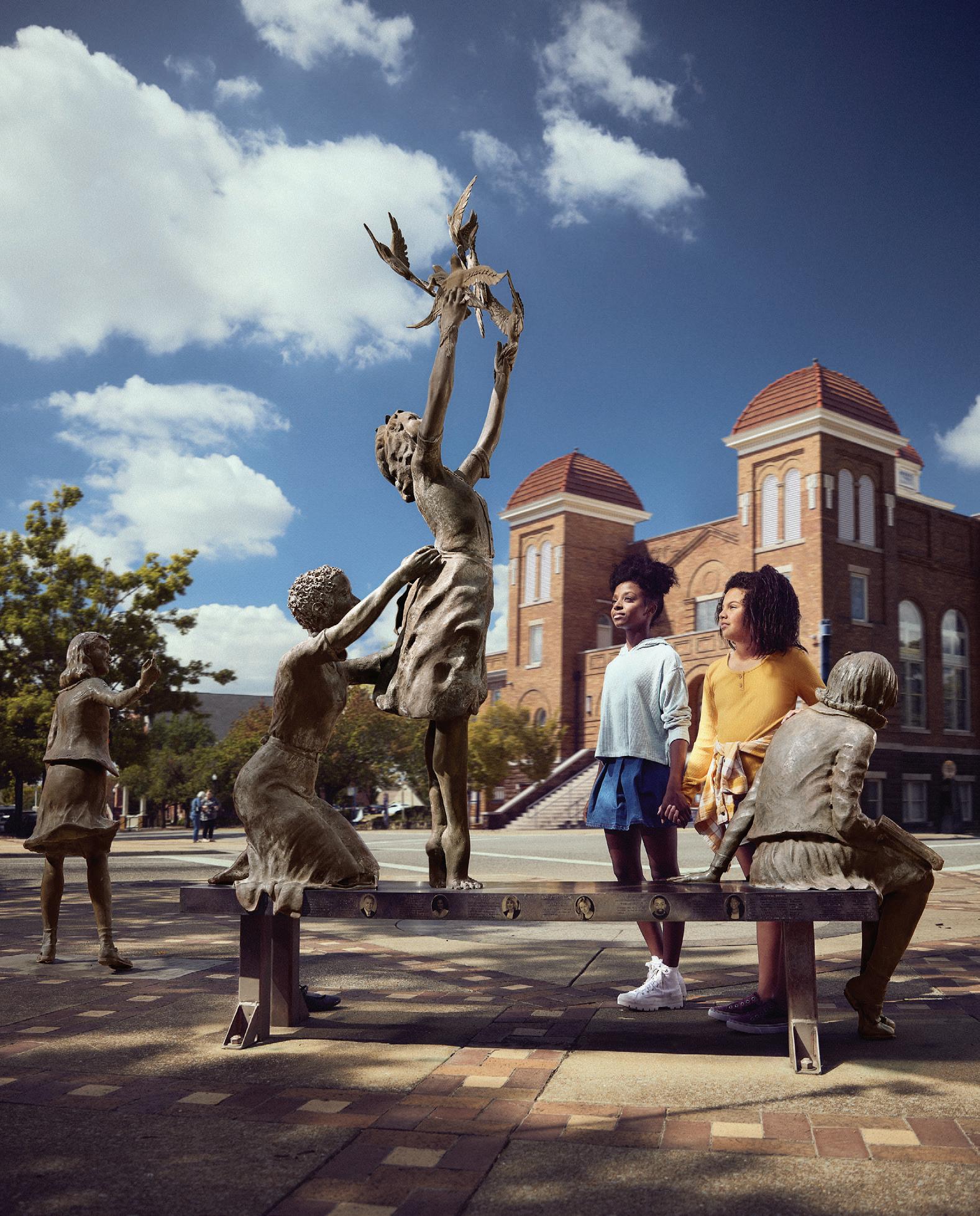
WHERE DREAMS MARCHED
A TOUR PLANNER’S GUIDE TO HISTORY THAT CHANGED THE WORLD.
Birmingham’s Civil Rights District has been named a National Monument. Bring your guests to visit the Birmingham Civil Rights Institute – a comprehensive telling of the struggle for Civil Rights, Kelly Ingram Park – where protesters and police clashed, and the 16th Street Baptist Church, where four little girls were killed in 1963. Walk where Dr. Martin Luther King, Jr. and many other brave men and women stood their ground in the fight for the rights of all Americans. Birmingham’s history is this country’s history. We look forward to sharing it with you.
Greensboro
Rock Hill
Columbia
Charleston
Raleigh-Durham
MID-SOUTH THE VIRGINIAS & D.C.
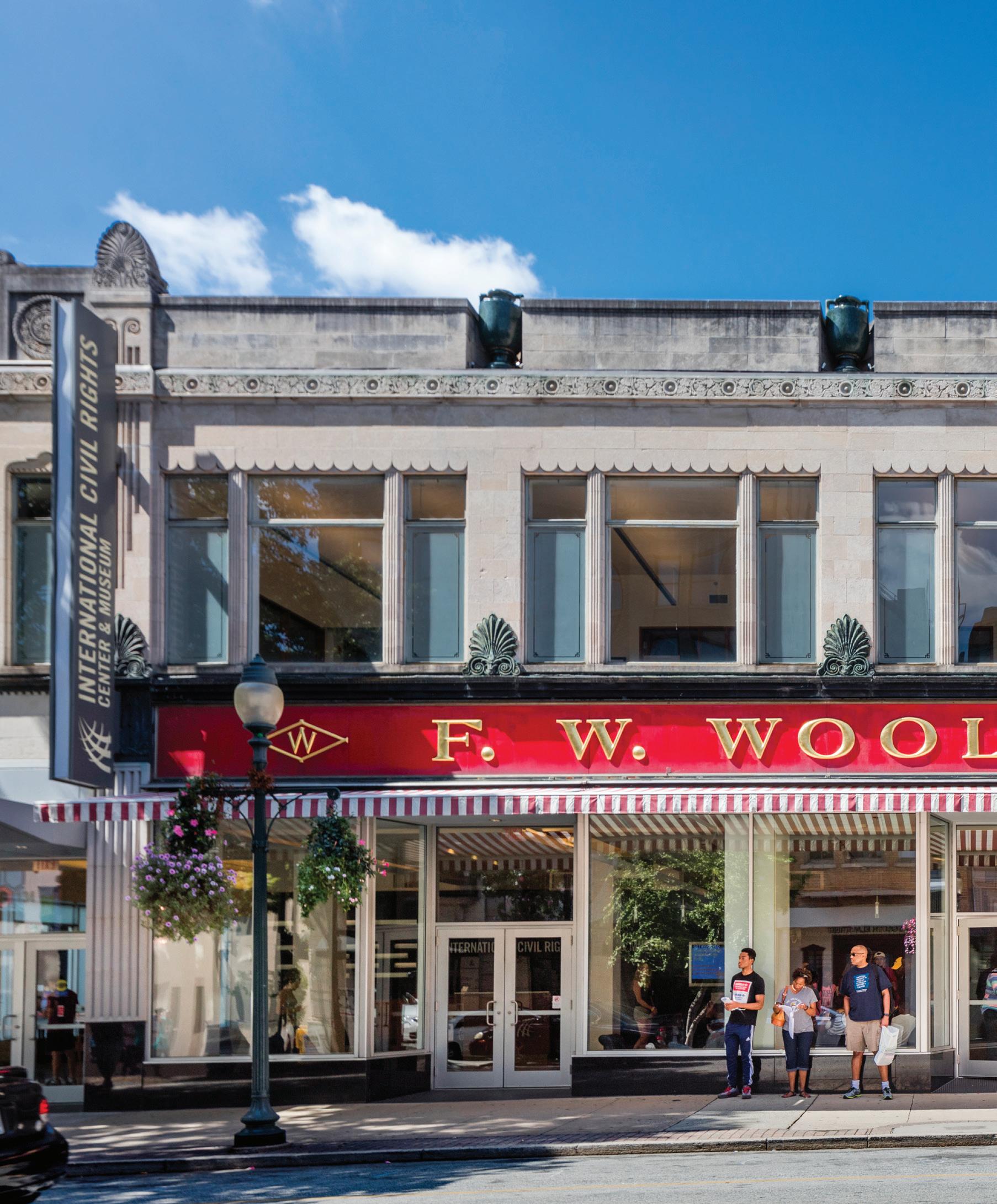 GREENSBORO’S INTERNATIONAL CIVIL RIGHTS CENTER AND MUSEUM CAN BE FOUND AT THE FORMER F.W. WOOLWORTH STORE WHERE BLACK COLLEGE STUDENTS STAGED A LUNCH COUNTER SIT-IN.
GREENSBORO’S INTERNATIONAL CIVIL RIGHTS CENTER AND MUSEUM CAN BE FOUND AT THE FORMER F.W. WOOLWORTH STORE WHERE BLACK COLLEGE STUDENTS STAGED A LUNCH COUNTER SIT-IN.
Education Overcomes Ignorance
The Carolinas raised students who refused to submit
 BY RACHEL CRICK
BY RACHEL CRICK
Bordered by the gorgeous Blue Ridge Mountains on one side and a popular strand of Atlantic beaches on the other, the Carolinas offer more than just natural scenery. Their rich history, dating back to pre-Colonial times, includes a history with the Civil Rights Movement. A trip through the Carolinas introduces travelers to figures whose peaceful protests rippled through the region. It also showcases places sacred to the movement, from resilient churches to famous lunch counters.
Beginning at the Atlantic, in Charleston, South Carolina, this itinerary steers travelers northwest to Columbia, north to Rock Hill, then into North Carolina for stops in Greensboro and the Raleigh-Durham area.
Courtesy USCRT
CAROLINAS SOUTHEAST I-10 CORRIDOR MIDWEST
Charleston, South Carolina
A trip to the harbor and seaside city of Charleston combines leisure with education. Walking tours of the city, ecological tours of its barrier islands, and stops at historic plantations and homes complement shopping sprees in the Charleston City Market, and walks on coastal beaches give travelers a well-rounded itinerary. To explore some of the city’s Civil Rights heritage, they can visit Mother Emanuel African Methodist Episcopal Church. Founded in 1816, it’s the oldest AME church in the region. Its current building was rebuilt in 1891 after being burnt down. It has witnessed many tragedies, including the racially motivated shooting in 2015 that took the lives of nine worshipers. The church is a testament to both the movement’s ongoing importance, as well as the fortitude of Charleston’s Black community.
CHARLESTONCVB.COM

CHAYZ LOUNGE HIGHLIGHTS
COLUMBIA, SOUTH CAROLINA
Travelers can get dressed up and usher in an unforgettable evening with a trip to Chayz Lounge in the River District of West Columbia, South Carolina. This snazzy, upscale jazz bistro is both a live music venue, offering regular performances of contemporary jazz and rhythm and blues music, and a restaurant, serving upscale entrees, fine wines and craft cocktails. Its mouthwatering entrees include Cajun pasta, Creole shrimp and grits, and garlic braised short ribs.
CHAYZLOUNGE.COM
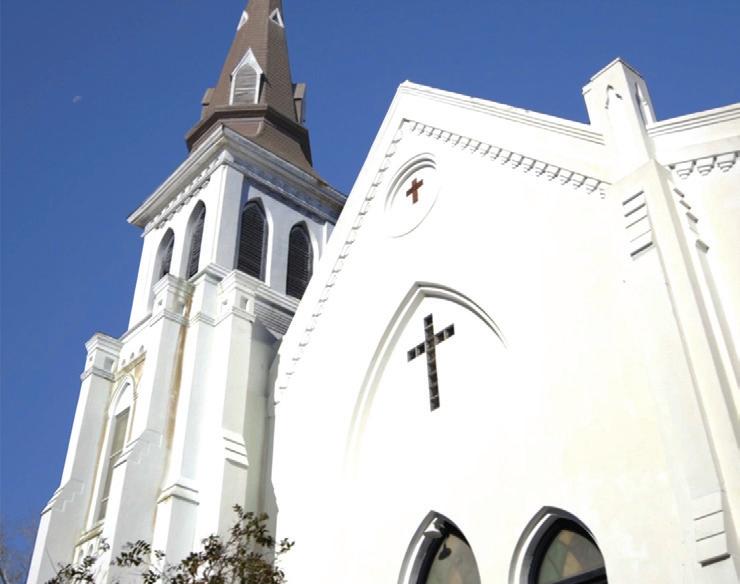
MOTHER EMANUEL AME CHURCH
Columbia, South Carolina
South Carolina’s capital comes equipped with a variety of attractions, from great greenspaces at state parks and gardens to thought-provoking museums, such as the South Carolina State Museum or the Columbia Museum of Art. Travelers visiting on Saturdays can hit the Soda City Market to check out local goods and food trucks. Another iconic city sight is the South Carolina State House, where a protest against segregation took place in 1961. Visitors can tour the Capitol and see the adjacent monument enshrining the fight for civil rights. The home of a prominent Civil Rights Movement leader, Modjeska Monteith Simkins, can also be found in Columbia. A visit to the cottage, which was once used as a meeting place and lodging for activists, will teach travelers about this great American hero and her contributions to the movement in the state.
EXPERIENCECOLUMBIASC.COM
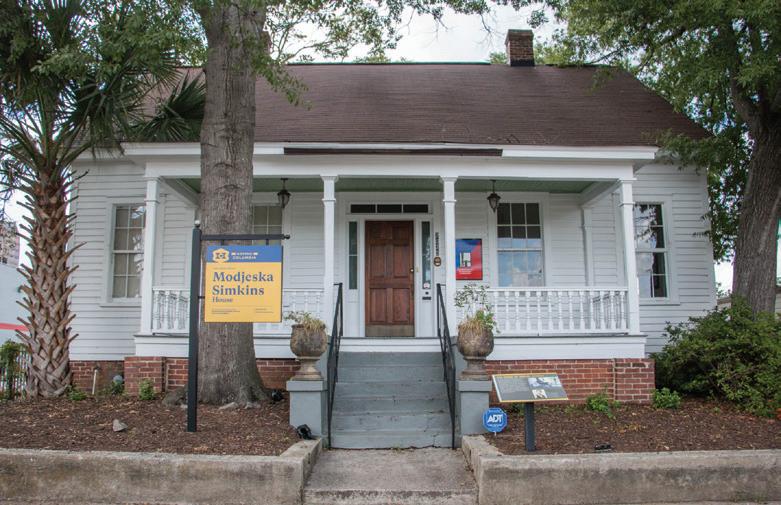
36
Courtesy USCRT
MODJESKA MONTEITH SIMKINS HOUSE
Courtesy USCRT
Photo courtesy Chayz Lounge

Rock Hill, South Carolina
Located in York County, Rock Hill, South Carolina, sits just south of the North Carolina border. Travelers can visit the city’s greenspaces, check out its expanding public art scene or even spend an afternoon at the Carowinds, a nearby renowned amusement park. They can delve into the area’s rich history by learning about the only federally recognized Native American tribe in the state, the Catawba, or the Revolutionary War battles that took place in Rock Hill. The city also has its share of Civil Rights history. Black students staged a sit-in protest after being denied service at the McCrory’s Five and Dime lunch counter. These sit-ins marked the beginning of protests lasting more than a year in Rock Hill. Today, there’s a marker in front of the original building the students occupied.
VISITYORKCOUNTY.COM
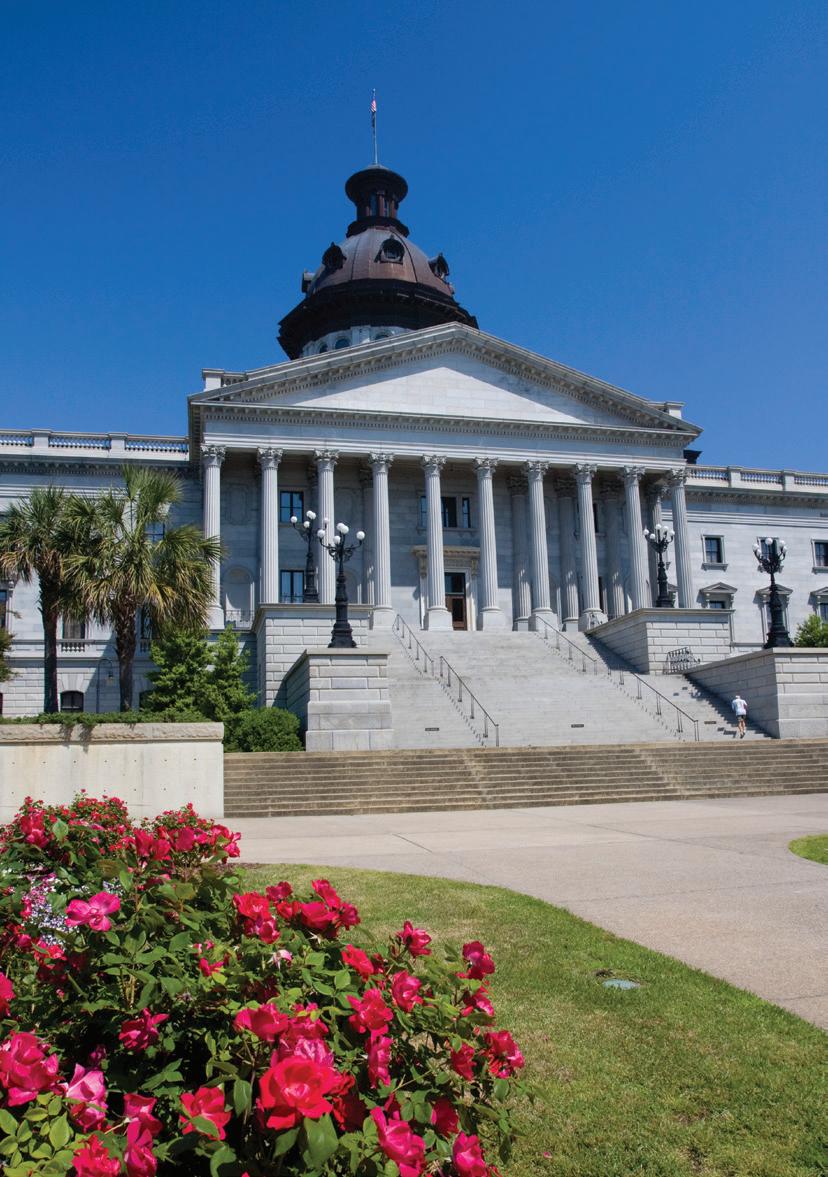
SOUTH CAROLINA STATE HOUSE
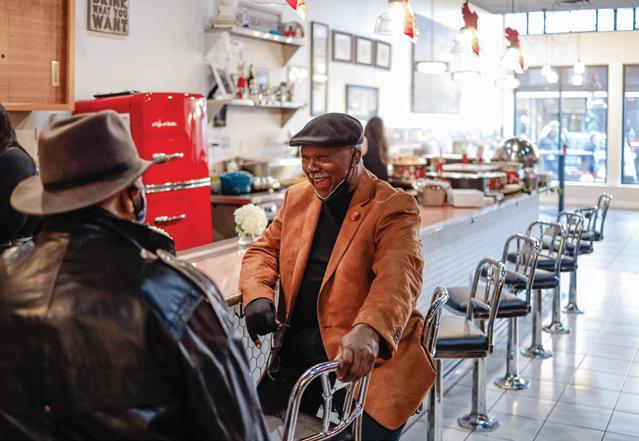
RESTAURANT
Courtesy Visit York County

BLACK MAGNOLIA SOUTHERN PATISSERIE
HIGHLIGHTS
GREENSBORO, NORTH CAROLINA
Who doesn’t need a sweet treat when they’re traveling? From awardwinning cinnamon rolls to massive, salted chocolate cookies and a bourbon banoffee toasted pecan sticky bun that won a national recipe contest, the rich, scratch-made goodies at Black Magnolia Southern Patisserie will make fans of any traveler. Visit the Black-owned, woman-owned bakery, located in the historic Revolution Mill in Greensboro, and try its many artisan pastries to fuel tours of the city.
BLACKMAGNOLIASO.COM
37
Courtesy USCRT
THE
OCCUPYING WHAT WAS MCCRORY’S FIVE AND DIME
Photo courtesy Black Magnolia Southern Patisserie
Greensboro, North Carolina
Once a prominent railroad hub, Greensboro remains a vibrant destination by celebrating both the old and the new. Thriving breweries, entertainment venues and a science center showcase what’s new, while the area’s tranquil parks, gardens and history museums pay tribute to the city’s character and past. An important part of this past is the Civil Rights protests originating in Greensboro that echoed throughout the state in 1960, when four Black college students staged a sit-in at the lunch counter of an F.W. Woolworth store. These students are honored at two sites in Greensboro: the February One Monument on the North Carolina Agricultural and Technical State University’s campus, and the original Woolworth’s, which is now the International Civil Rights Center and Museum and a top attraction in the city for tours.
VISITGREENSBORONC.COM

311 GALLERY HIGHLIGHTS
RALEIGH, NORTH CAROLINA
Trendy Raleigh is home to a robust art scene that includes 311 Gallery. Located in the Warehouse District downtown, this intimate gallery is Black-owned and focused on showcasing contemporary art in a range of mediums from local and national juried exhibitions. The gallery prioritizes nurturing creativity by offering studio space for artists; it also aims to curate a diverse array of art. Travelers can stop by to view the art or peruse the gift shop.
311ARTGALLERY.COM

Raleigh-Durham, North Carolina
Though often packaged together because of their proximity, Raleigh and Durham both have distinct personalities. Raleigh, the hip capital city, offers museums such as the North Carolina Museum of Art and the North Carolina Museum of Natural Sciences. Travelers can see how the city remembers Civil Rights leaders at the Dr. Martin Luther King Jr. Memorial Gardens, a public park providing a tranquil place to celebrate the legacy of King. At Shaw University, Estey Hall is the oldest building on campus and the first in the country constructed for the higher education of Black women. In Durham, a town defined by Duke University, visitors can see beautiful historic landmarks related to the college. To learn about the area’s African American Heritage, they can visit the Hayti Heritage Center, an education center in a building that was once an AME Church.
VISITRALEIGH.COM
DISCOVERDURHAM.COM
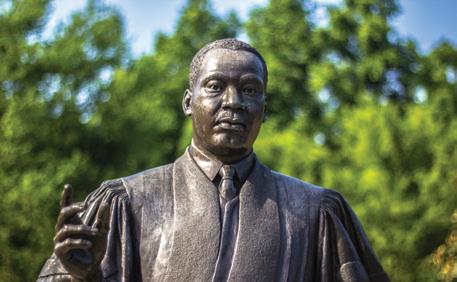
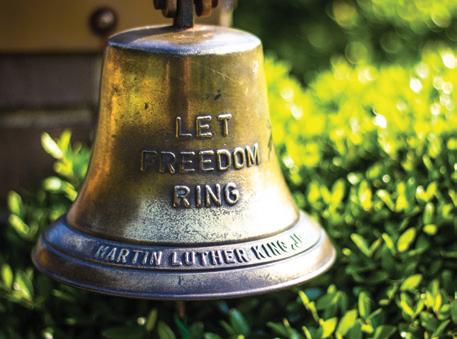

38
ESTEY HALL
Courtesy Visit Raleigh Courtesy Visit Raleigh
INTERNATIONAL CIVIL RIGHTS CENTER
AND MUSEUM
DR. MARTIN LUTHER KING JR. MEMORIAL GARDENS
Courtesy USCRT
BELL AT DR. MARTIN LUTHER KING JR. MEMORIAL GARDENS
Courtesy USCRT
Photo courtesy Visit Raleigh
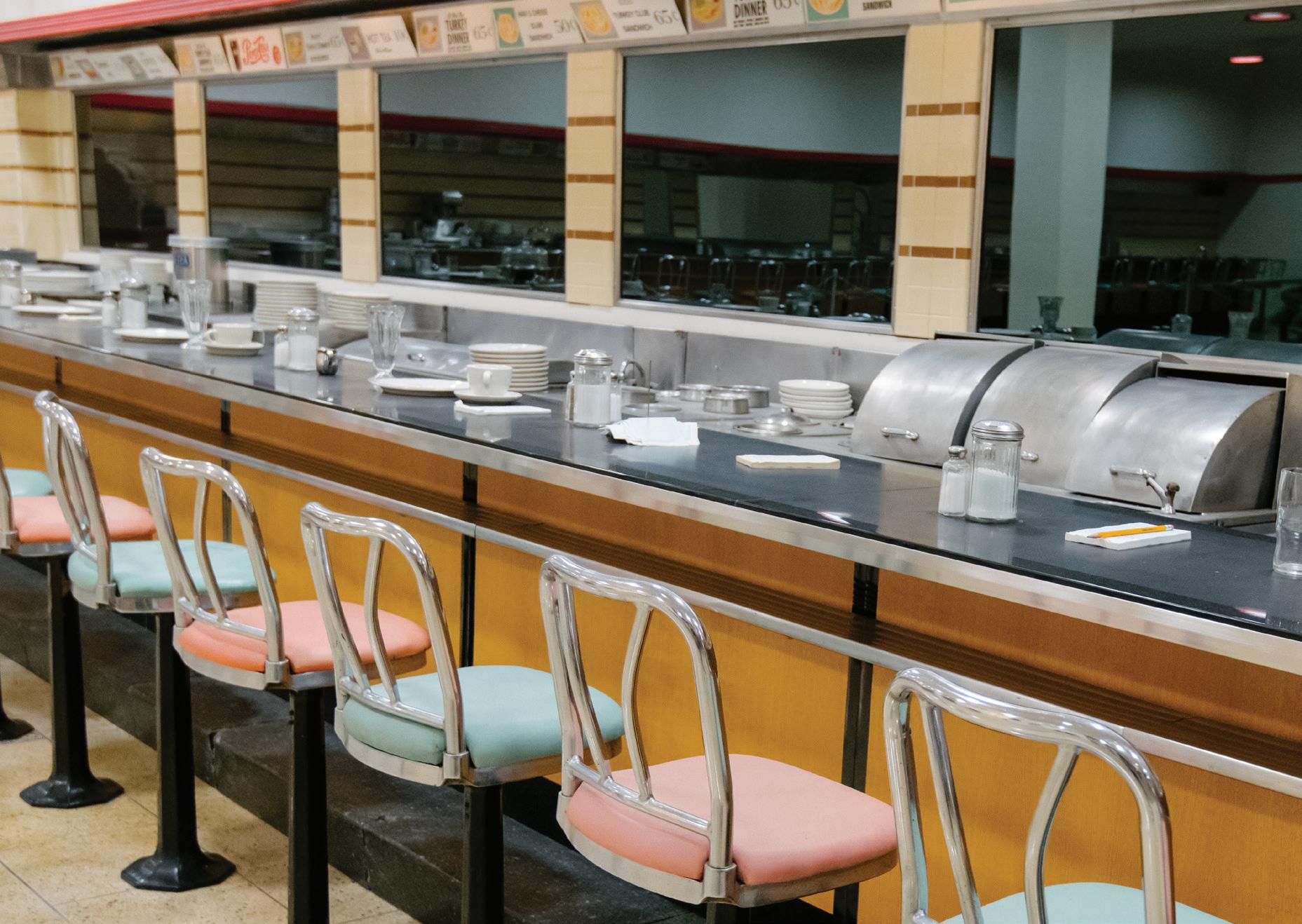








Discover the NC historic sites that pioneered the Civil Rights Movement: INTERNATIONAL CIVIL RIGHTS MUSEUM ESTEY HALL AT SHAW UNIVERSITY MLK MEMORIAL GARDEN HAYTI HERITAGE CENTER FEBRUARY ONE MONUMENT visitnc.com/civil-rights
MID-SOUTH THE VIRGINIAS & D.C.
 WILLIAM FRANTZ ELEMENTARY SCHOOL IN NEW ORLEANS WAS WHERE 6-YEAR-OLD RUBY BRIDGES BECAME THE FIRST BLACK STUDENT TO ATTEND IN 1960.
Panama City
Lafayette
Baton Rouge
Monroeville
New Orleans
WILLIAM FRANTZ ELEMENTARY SCHOOL IN NEW ORLEANS WAS WHERE 6-YEAR-OLD RUBY BRIDGES BECAME THE FIRST BLACK STUDENT TO ATTEND IN 1960.
Panama City
Lafayette
Baton Rouge
Monroeville
New Orleans
Justice
Becomes the Law
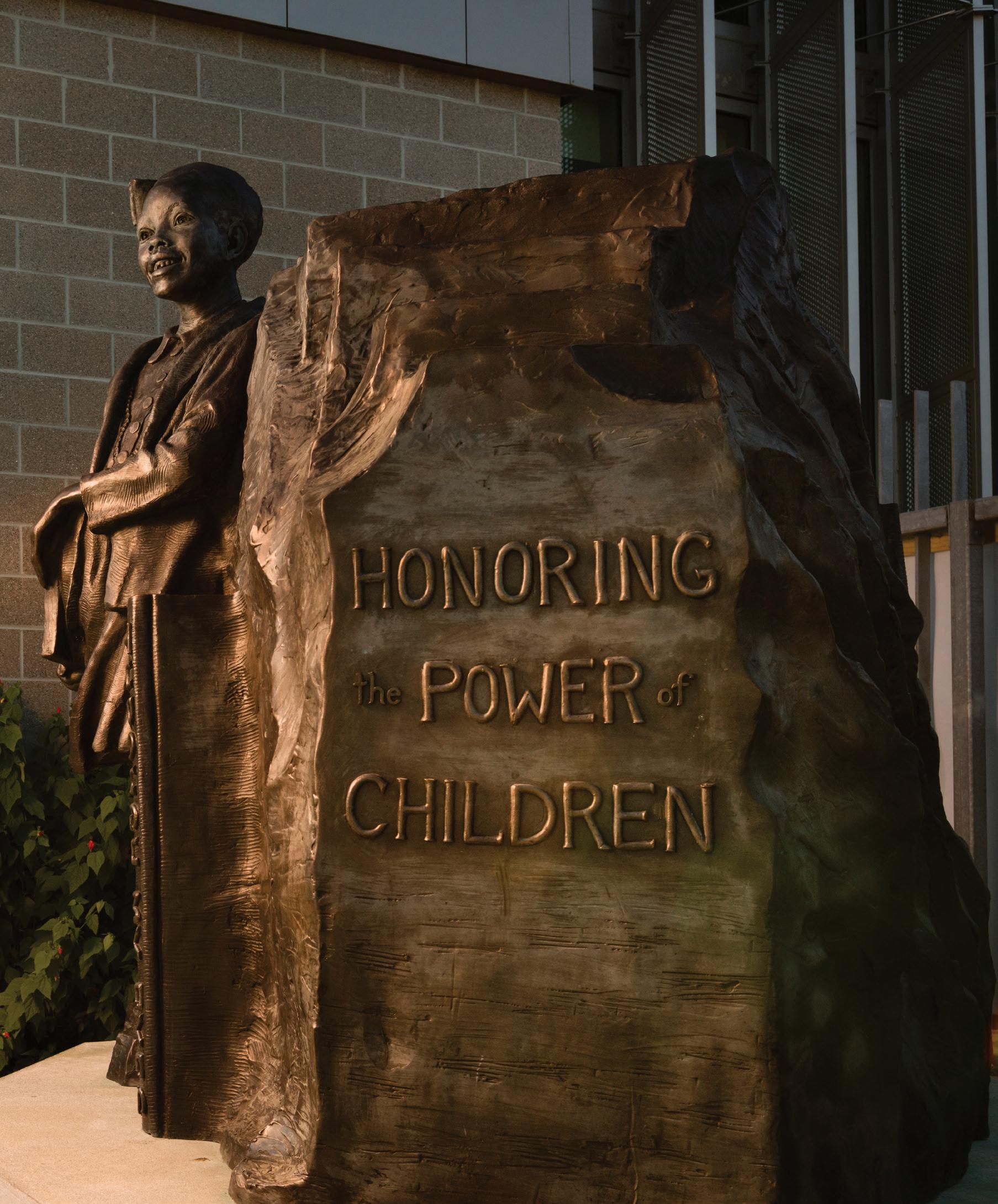 BY RACHEL CRICK
BY RACHEL CRICK
The cities along Interstate 10 encompass the land where landmark legal decisions were made. It’s also the land where Civil Rights activists paved the way for changes by taking back power and where progress was sometimes even peaceful.
Beginning in Lafayette, Louisiana, this itinerary takes travelers east, through Louisiana’s capital city and the Big Easy, before making stops in Alabama and Florida.
Courtesy USCRT
The I-10 Corridor marks where students and defendants fought and won CAROLINAS SOUTHEAST I-10 CORRIDOR MIDWEST
Lafayette, Louisiana
In the heart of Acadiana, Louisiana’s French region, Lafayette has special connections to Cajun and Creole culture, from zydeco music to French-themed festivals. Travelers can take food tours of the city or head to Acadian Village for an enriching and authentic Cajun experience. Lafayette also has connections to the Civil Rights Movement. In 1953, four Black students attempted to enroll in Southwestern Louisiana Institute, now known as the University of Louisiana at Lafayette, and were denied. The students, along with the NAACP, filed a lawsuit and won, paving the way for desegregation before the landmark Brown v. Board of Education decision. This peaceful victory is commemorated with the Pillars of Progress Memorial, which visitors will find on the college’s campus.
LAFAYETTETRAVEL.COM

BACKSTREET CULTURAL MUSEUM HIGHLIGHTS
NEW ORLEANS
What began in 1988 as a small collection of photographs and memorabilia soon grew into a museum celebrating African American culture in New Orleans. Its exhibits on Mardi Gras Indians, jazz funerals, Skull and Bone Gangs and other topics include beautiful costumes, photographs and an expansive film collection that documents over 500 jazz funerals. The museum hosts community events and welcomes travelers to learn from this unique collection of cultural artifacts.
BACKSTREETMUSEUM.ORG
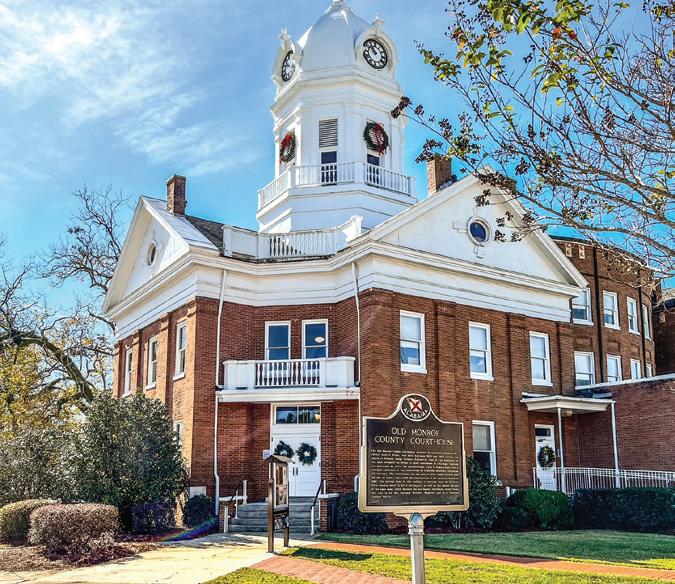
Baton Rouge, Louisiana
Home to the Louisiana State University Tigers, abundant history, several museums and beautiful greenspaces, Baton Rouge, Louisiana, attracts travelers with a wide range of interests. It also has extensive Civil Rights history, with several landmarks on the U.S. Civil Rights Trail. A marker in Baton Rouge commemorates the longest march of the movement, 105 miles from Bogalusa to the Louisiana State Capitol, where activists delivered grievances to the governor. Louisiana’s Old State Capitol is also of interest, and not just for its architecture, because it was the site of a free-ride network organized during the 1953 Baton Rouge Bus Boycott. And at another protest site, S.H. Kress Department Store, students were arrested for sit-in protests that later led to a court decision keeping peaceful protesters from being arrested.
VISITBATONROUGE.COM

42
By Sarah Green, courtesy Monroe County Museum
Courtesy MO SHS
OLD MONROE COUNTY COURTHOUSE MUSEUM
Photo courtesy New Orleans & Company
LOUISIANA STATE CAPITOL
Courtesy Visit Baton Rouge
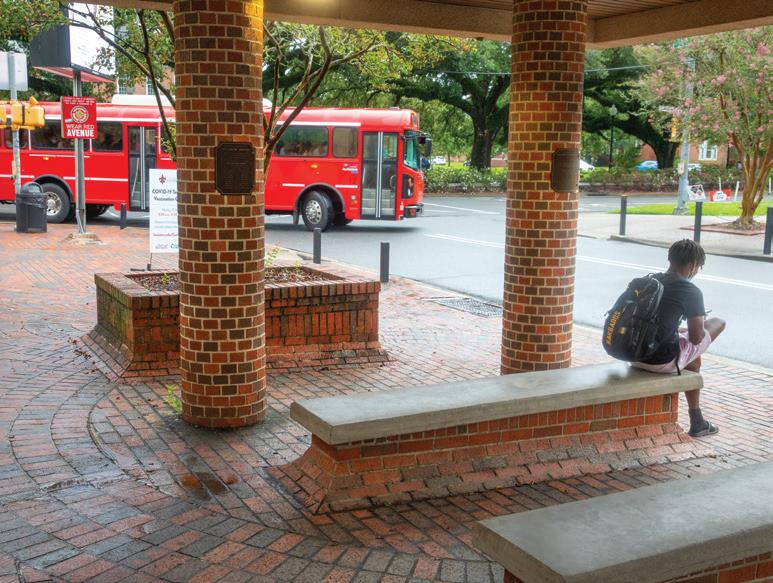

New Orleans
New Orleans’ reputation precedes it — from the raucous nightlife of Bourbon Street to the haunting allure of the paranormal to its signature medley of cuisine, the Crescent City is a bucket list item for many travelers. But the city also played a pivotal role in the Civil Rights Movement. Visitors can tour the U.S. Court of Appeals for the Fifth Circuit, a National Historic Landmark where several legal decisions were responsible for integrating schools in the South. The results of these landmark decisions can be seen at William Frantz Elementary School, where 6-year-old Ruby Bridges became the first Black student to attend in 1960. History was made on Canal Street, where lunch counter protests and boycotts were staged, and at Dooky Chase’s Restaurant, where Black and white activists alike were able to meet and strategize during a time when sitting together was illegal.
NEWORLEANS.COM
Monroeville, Alabama
Monroeville is known as the Literary Capital of Alabama thanks to two beloved authors who spent their childhoods there: Harper Lee and Truman Capote. Lee’s timeless classic, “To Kill A Mockingbird,” is set in Maycomb, Alabama, a fictional town based on Monroeville. The novel entered the cultural consciousness as a commentary on racial injustice from the perspective of a child; it mirrors Lee’s own experience watching her father, an attorney, defend a Black man accused of murder. Travelers can explore the Old Monroe County Courthouse Museum, where the trial that inspired the events in Lee’s novel took place. The museum features exhibits detailing the city’s literary legacy. Groups can also familiarize themselves with the town on a self-guided walking tour or search for all the markers on the Literary Bronze Sculpture Trail.

GEAUX RIDE HIGHLIGHTS
BATON ROUGE, LOUISIANA
Bringing a bit of color to nights in Baton Rouge, Geaux Ride is a Blackowned bike tour company that promotes wellness and positive mental health in the city. Offering bikes that glow in the dark as part of an interesting and colorful excursion, the company provides tours of the city, social rides, bike bar crawls and self-guided experiences for a distinct way to see Baton Rouge. Tours can be accompanied with a variety of tunes.
GEAUXRIDEBIKES.COM
43
Courtesy USCRT
Courtesy USCRT
U.S. COURT OF APPEALS FOR THE FIFTH CIRCUIT
VISITMONROEVILLEAL.COM
Photo courtesy Geaux Ride
PILLARS OF PROGRESS MEMORIAL IN LAFAYETTE
Panama City, Florida
Like many other Florida destinations, visitors are drawn to Panama City by its warm weather and beautiful beaches. This Panhandle city is known for a great selection of on-the-water activities, from paddleboarding to dolphin swims. Visitors can also peruse the city’s laid back, artsy community with trips to galleries, theaters and shops. At the Bay County Courthouse downtown, the Gideon v. Wainwright historical marker commemorates a legal victory that paved the way for a more just legal system. After Clarence Earl Gideon, man accused of committing a burglary, was denied legal counsel, he sued; the Supreme Court eventually ruled in Gideon’s favor, and as a result, all states are required to provide legal counsel if a defendant cannot afford their own.
DESTINATIONPANAMACITY.COM



“YOU HAVE THE RIGHT TO AN ATTORNEY. IF YOU CANNOT AFFORD AN ATTORNEY, ONE WILL BE PROVIDED FOR YOU.”
You know the line – now see the place where it all started. The Bay County Courthouse is one of five Florida sites on the U.S. Civil Rights Trail and the origin of the U.S. Supreme Court’s landmark Gideon v. Wainwright decision in 1963. Learn more at destinationpanamacity.com/ civilrightstrail.
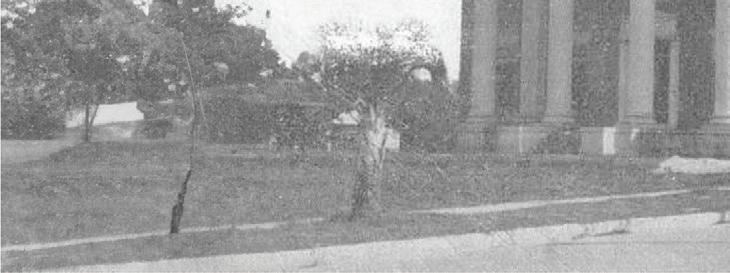



BLACK CAFÉ HIGHLIGHTS
LAFAYETTE, LOUISIANA
Located in downtown Lafayette, Black Café is a Black-owned coffee shop and café serving both java and some light fare. The café is most famous for its Scotch eggs — boiled eggs wrapped in sausage and fried — but it also serves sandwiches, salads, desserts and pastries, including beignets. The shop prides itself on the bold flavors of its black coffee, but it also serves café au lait, chai lattes and other coffee house classics. BLACKCAFELFT.COM
44
Photos courtesy Destination Panama City
SUNSET IN PANAMA CITY
GIDEON V. WAINWRIGHT HISTORICAL MARKER
SEAFOOD IN PANAMA CITY
Photo courtesy Lafayette CVC
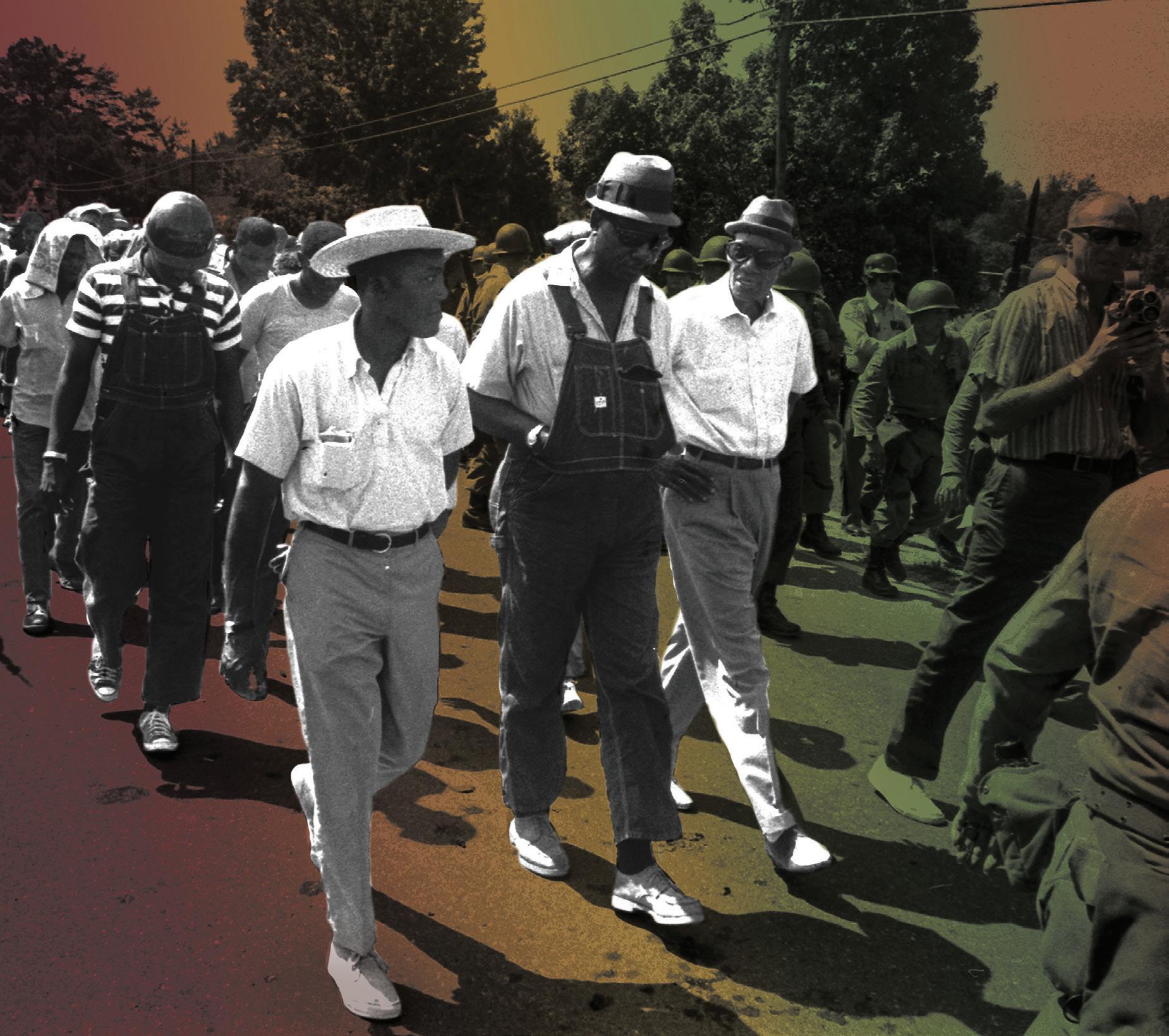
105 miles that paved a movement
In 1967, a group of Civil Rights activists led by A.Z. Young, Gayle Jenkins, and Robert “Bob” Hicks marched from Bogalusa to Baton Rouge, determined to be heard. Follow them up the State Capitol steps on the Louisiana Civil Rights Trail.

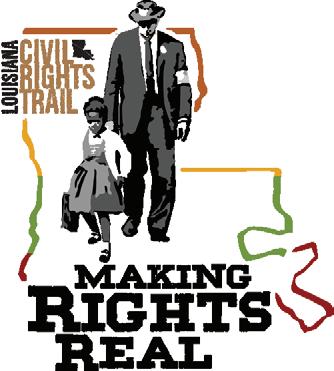




MID-SOUTH THE VIRGINIAS & D.C.
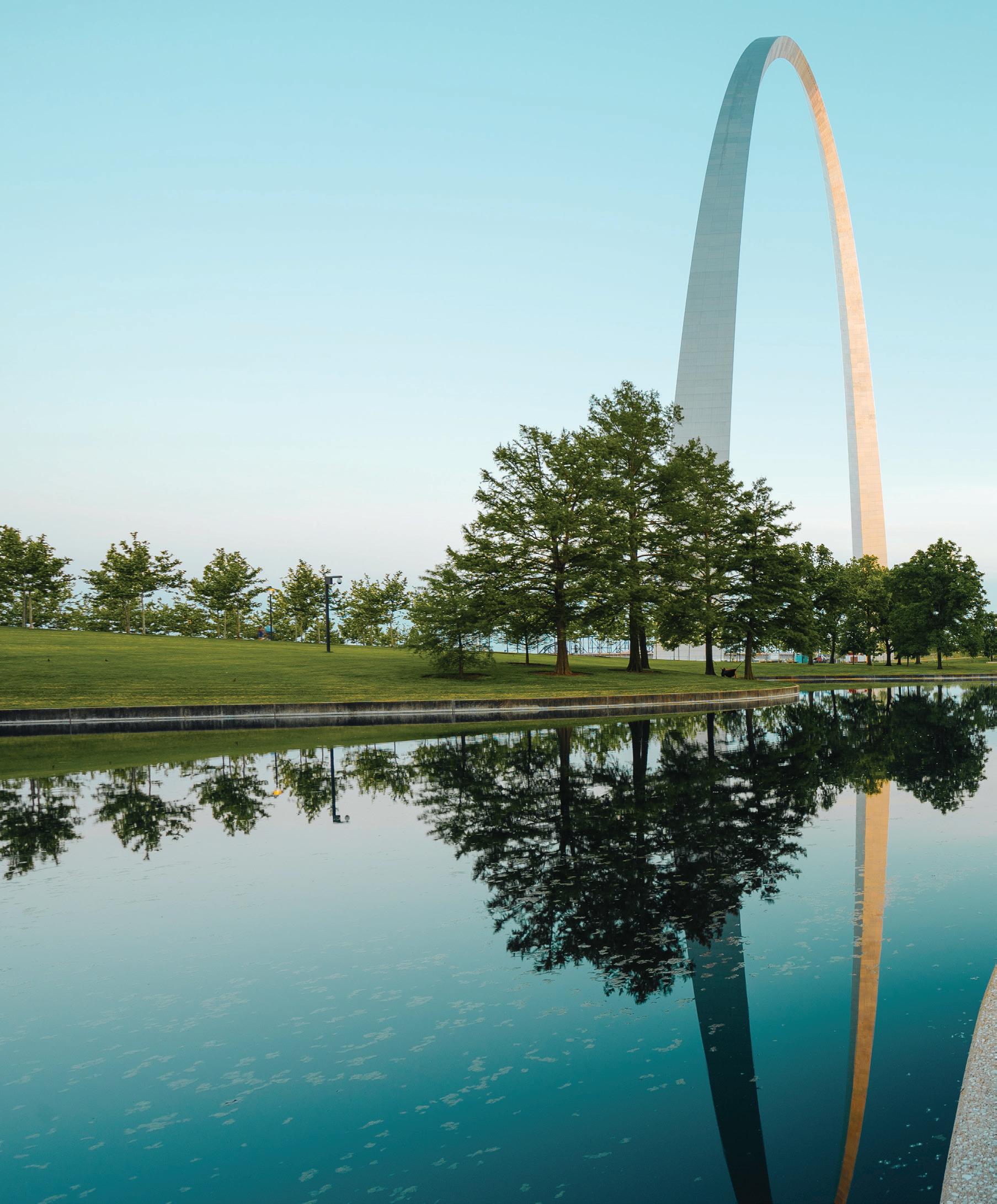 GATEWAY ARCH NATIONAL PARK IS JUST A BLOCK AWAY FROM THE OLD COURTHOUSE, WHICH HEARD THE FAMOUS DRED SCOTT CASE IN 1847.
Kansas City
Topeka St. Louis
Abilene
GATEWAY ARCH NATIONAL PARK IS JUST A BLOCK AWAY FROM THE OLD COURTHOUSE, WHICH HEARD THE FAMOUS DRED SCOTT CASE IN 1847.
Kansas City
Topeka St. Louis
Abilene
The Movement Spreads
The Midwest’s courts demanded desegregation
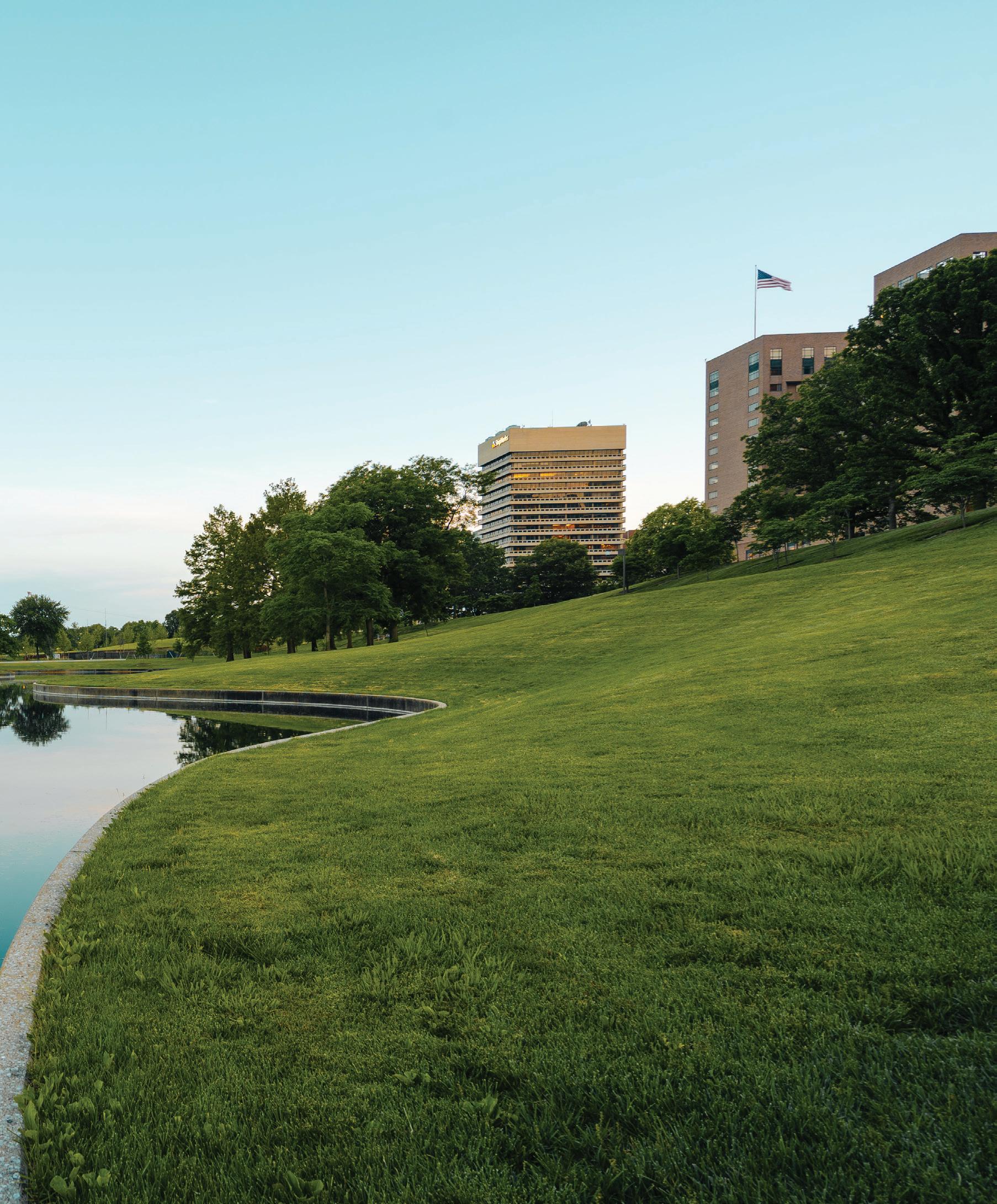 BY RACHEL CRICK
BY RACHEL CRICK
As the U.S. expanded westward, so did the quest for Civil Rights, as early as the Abolitionist Movement in the years leading up to the Civil War. While perhaps not as defined by the Civil Rights Movement as the South, the Midwest lays claim to some of the key legal victories for the movement as a whole, the effects of which were felt through the whole country.
Beginning in St. Louis, this Midwestern itinerary winds its way through Missouri to Kansas City, and then into Kansas with stops in Topeka and Abilene.
Courtesy Missouri Tourism
CAROLINAS SOUTHEAST I-10 CORRIDOR MIDWEST
St. Louis
No one can visit St. Louis without seeing Gateway Arch National Park, featuring the 630-foot-tall steel and concrete arch, the city’s crown jewel. Additional museums, parks and iconic architecture make this capital city a treat for travelers. Just a block away from the Gateway Arch, they will find the Old Courthouse, which heard the famous Dred Scott case in 1847, in which an enslaved man, Dred Scott, sued for his and his wife’s freedom. Another monument of an important legal battle in St. Louis is the Shelley House. The home, in an area of the city restricted to white homeowners, was bought by a Black family, the Shelleys, who were sued. The U.S. Supreme Court ruled in favor of the Shelley family in 1948, creating a beacon of hope for the Civil Rights Movement.
EXPLORESTLOUIS.COM

SOUL FIRE FOOD CO. HIGHLIGHTS
TOPEKA, KANSAS
Don’t pass through Topeka without taking some smoky and savory goodness to go. Soul Fire Food Co. began as a food truck and opened a storefront in 2021, but it still does carry-out exclusively. Travelers won’t mind once they taste this Black-owned restaurant’s smoked ribs and pulled pork, Indian fry bread, and soul fries loaded with cheese sauce and barbecue sauce. Either find the food truck or visit their storefront on the east side of town.
SOULFIREFOOD.COM
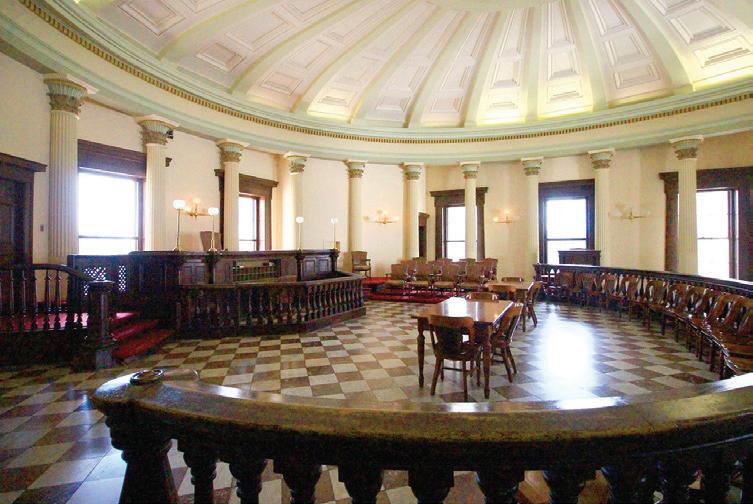
OLD COURTHOUSE
Kansas City, Missouri
Spread between Missouri and Kansas, Kansas City is known for jazz, barbecue and its urban water features. Visitors seeking to learn more about local culture can head to the 18th and Vine District to check out the American Jazz Museum, which highlights the musical genre’s history, as well as some prominent jazz musicians. Close by, the Negro Leagues Baseball Museum teaches visitors about the Negro Leagues and baseball in Kansas City. It explores the topics of segregation and later integration through the lens of America’s favorite pastime with photographs, memorabilia and 10,000 square feet of exhibits. The city is also home to several other art and history museums, including the Nelson-Atkins Museum of Art and the National World War I Museum, which are popular attractions.
VISITKC.COM
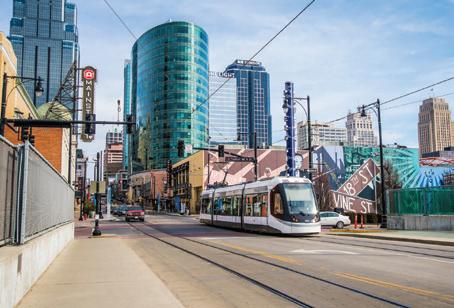
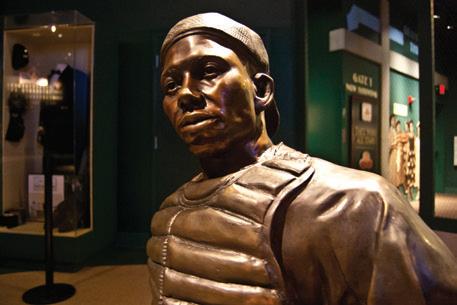
NEGRO LEAGUES BASEBALL MUSEUM

48
AMERICAN JAZZ MUSEUM
DOWNTOWN KANSAS CITY
Courtesy USCRT
Courtesy Visit KC
Courtesy USCRT
Courtesy Visit KC
Photo by Sean Johnson, courtesy Soul Fire Food Co.
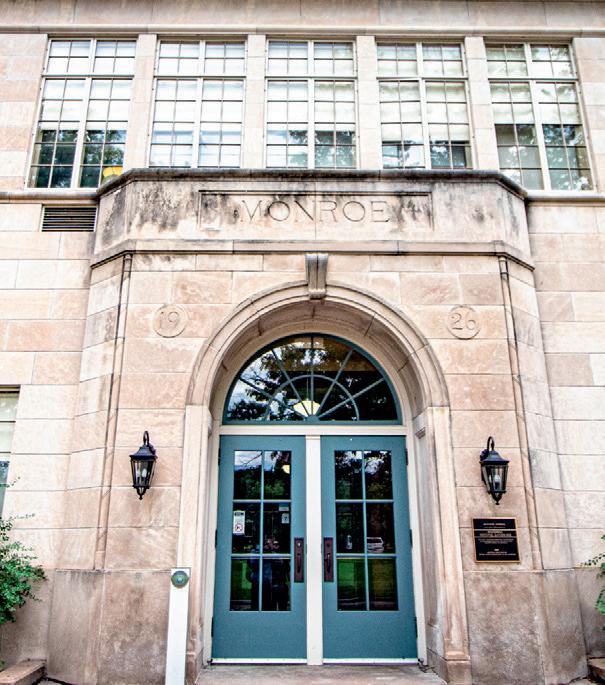
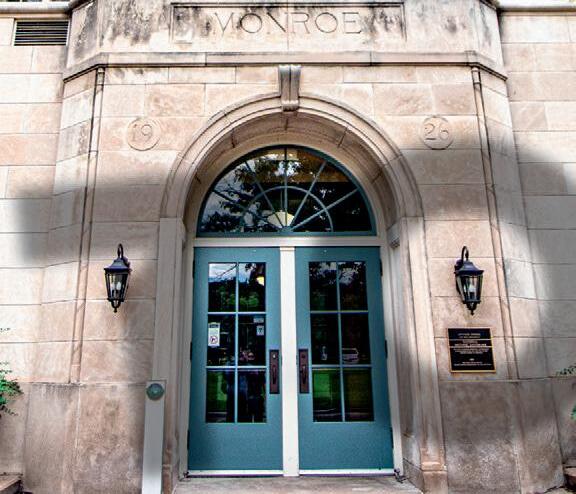


Be
Free



If you’re a lover of arts and music, this city is for you! Each year, thousands visit Topeka to enjoy events like Fiesta Topeka, For the Culture KS, India Mela and more. Topeka is a city rich in history and proud of our commitment to diversity and civil rights. In May 2024, we’ll celebrate the 70th anniversary of the landmark Brown v. Board of Education decision with multiple activations across the city including art installations and a spoken word operetta.

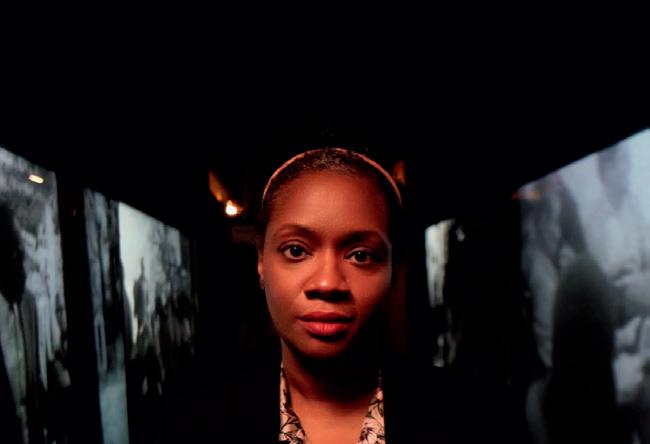

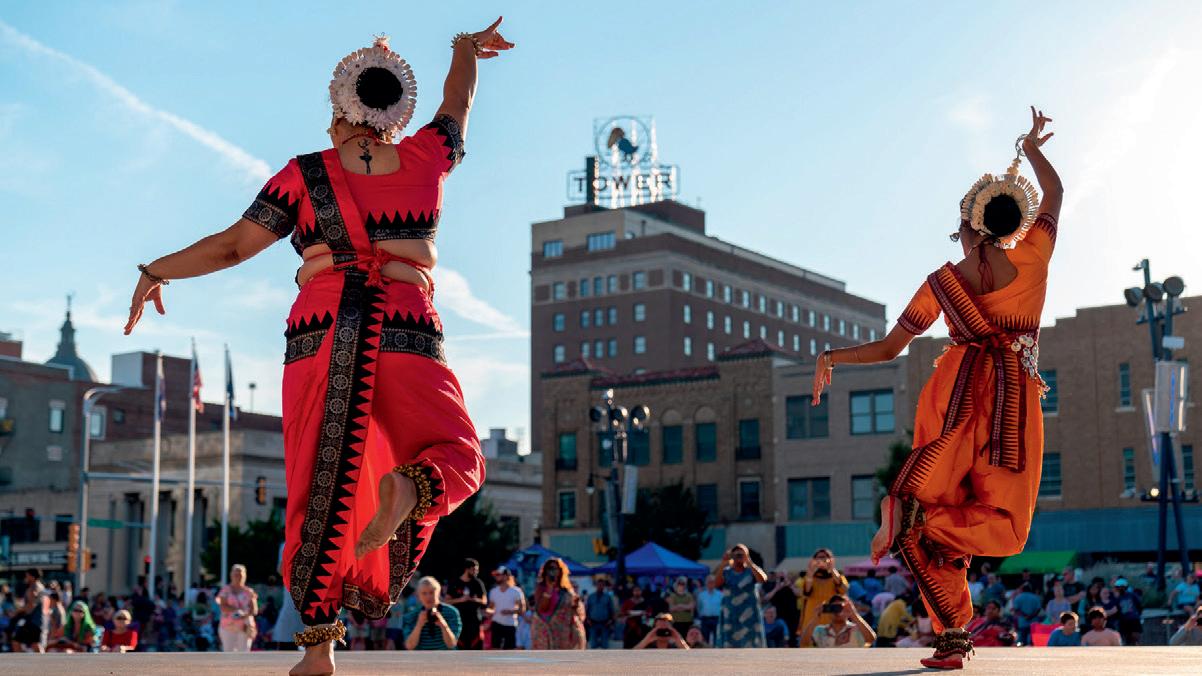

VisitTopeka.com
•
•
See
Topeka, Kansas
Kansas’ capital city, Topeka, is made colorful by plenty of art, culture, and of course, tulips. Each April, the city’s gardens host a floral festival called Tulip Time, which involves thousands of the beautiful blooms. The city’s history is fortified with its connection to Brown v. Board of Education, the 1954 Supreme Court case that ended legal school segregation throughout the country. Located at Monroe Elementary, as well as a segregated elementary school in Topeka, the Brown v. Board of Education National Historical Park enshrines this important legal case and the brave activists who fought for victory. Visitors can take self-guided tours of the park, watch a 30-minute film on segregation and view exhibits, including a replica 1954 segregated classroom.
VISITTOPEKA.COM

VINE STREET BREWING HIGHLIGHTS
KANSAS CITY, MISSOURI
When visiting the 18th and Vine Museum District in Kansas City, make sure to stop at Missouri’s first Blackowned brewery, Vine Street Brewing. Opened in 2023, the brewery has enriched the Kansas City craft beer scene. It offers a varied selection of beer, with intriguing flavors such as guava, lavender and blueberries making appearances on the menu alongside more traditional brews. The brewery partners with Black-owned food vendors to provide visitors with delicious food to pair with their craft brews.
VINESTBREWING.COM

BROWN V. BOARD OF EDUCATION
Abilene, Kansas
The small town of Abilene, Kansas, is only home to about 6,500 residents, but it still packs a punch. It’s former President Dwight D. Eisenhower’s hometown and home to the Dwight D. Eisenhower Presidential Library and Museum. Eisenhower was president from 1953 to 1961, when the Civil Rights Movement was gaining momentum. His actions to propel the movement forward included signing the 1957 Civil Rights Act, which aimed to protect Black voters’ rights and established the U.S. Commission on Civil Rights. Eisenhower also desegregated some areas of the federal government, including the armed forces. Travelers to Abilene can visit the library and museum to learn about the man who wielded his executive power for the advancement of Civil Rights.
ABILENEKANSAS.ORG
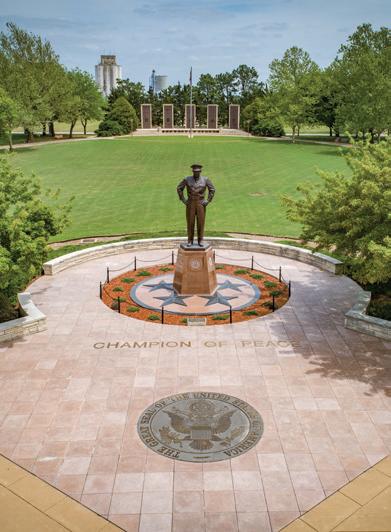
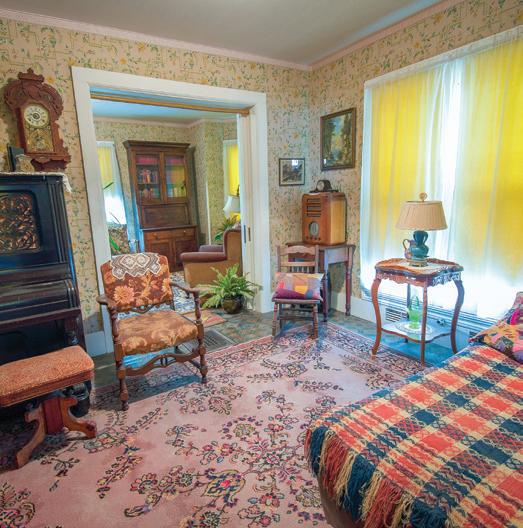
50
EISENHOWER’S BOYHOOD HOME
NATIONAL HISTORICAL PARK
Courtesy Abilene CVB
Photo courtesy Visit KC
Courtesy Visit Topeka
Courtesy Abilene CVB
EISENHOWER PRESIDENTIAL LIBRARY AND MUSEUM
TO THE FUTURE
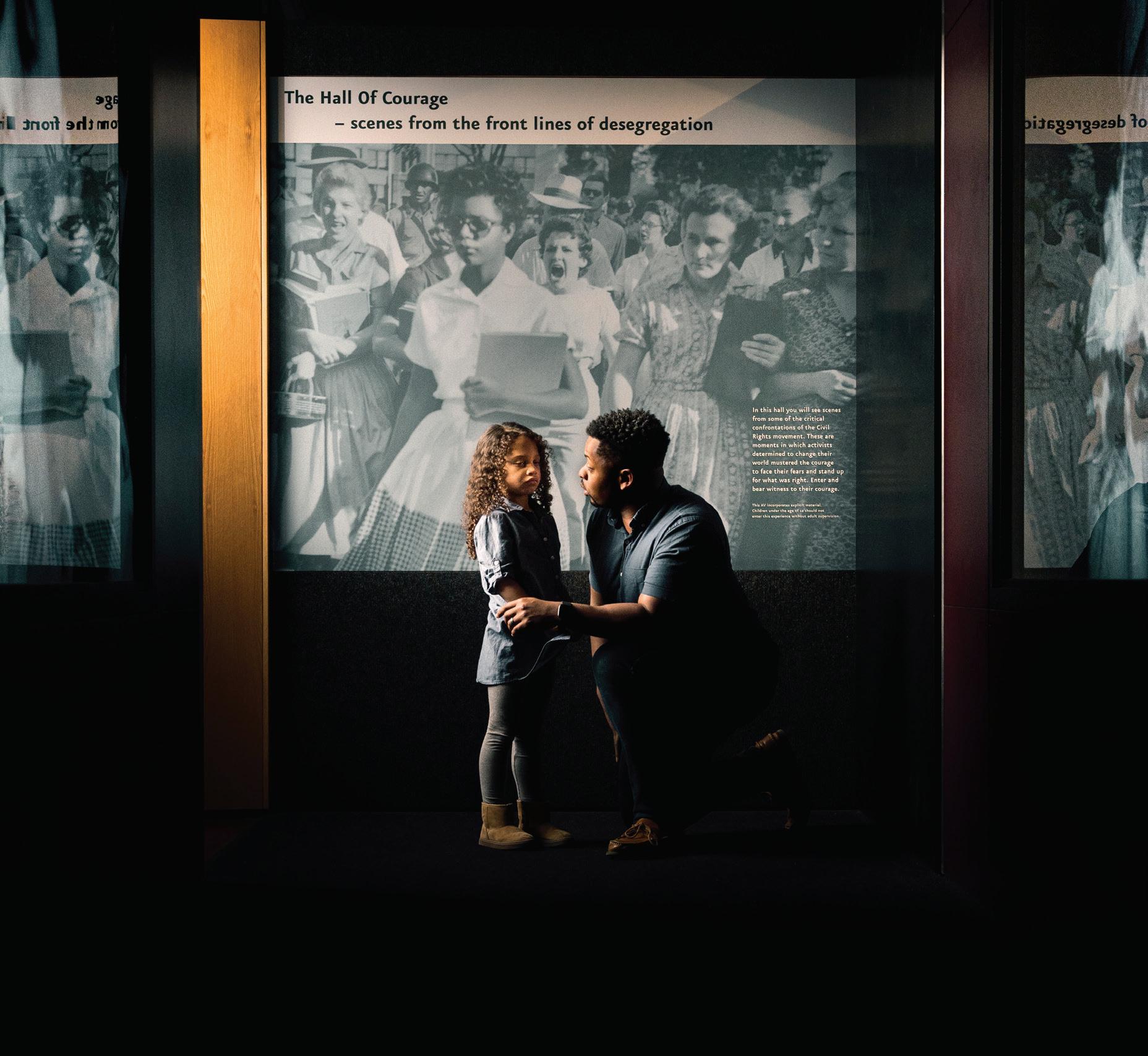
In Kansas, we celebrate our history by retelling it at every turn. From entering the Union as a free state to bringing about the landmark Supreme Court decision that struck down segregation. Our future is bright, because of our past.
The Kansas experience is a salute to the bold. To the courageous. To the dreamers. To the stars.

Vacation in Kansas Brown v. Board of Education National Historic Site, Topeka, KS | TravelKS.com

CONTINUE THE JOURNEY. FOLLOW THE TRAIL. U.S. CIVIL RIGHTS TRAIL MARKETING ALLIANCE, LLC. ALABAMA | ARKANSAS | FLORIDA | GEORGIA | KANSAS | KENTUCKY | LOUISIANA | MISSISSIPPI MISSOURI | NORTH CAROLINA | SOUTH CAROLINA | TENNESSEE | VIRGINIA | WEST VIRGINIA CIVILRIGHTSTRAIL.COM















 BY BRIAN JEWELL
BY BRIAN JEWELL


 By Justin Fox Burks, c ourtesy TN Dept. of Tourist Dev.
By Justin Fox Burks, c ourtesy TN Dept. of Tourist Dev.








 FRED
BY VICKIE MITCHELL
FRED
BY VICKIE MITCHELL



 THE NATIONAL CIVIL RIGHTS MUSEUM IN MEMPHIS INCLUDES THE LORRAINE MOTEL WHERE MARTIN LUTHER KING, JR. WAS ASSASINATED IN 1968.
Jackson
Sumner
Little Rock
Memphis
Nashville
Louisville
THE NATIONAL CIVIL RIGHTS MUSEUM IN MEMPHIS INCLUDES THE LORRAINE MOTEL WHERE MARTIN LUTHER KING, JR. WAS ASSASINATED IN 1968.
Jackson
Sumner
Little Rock
Memphis
Nashville
Louisville




















 BY RACHEL CRICK
BY RACHEL CRICK
















 Sammy T’s Fredericksburg, Virginia
Sammy T’s Fredericksburg, Virginia
































 GREENSBORO’S INTERNATIONAL CIVIL RIGHTS CENTER AND MUSEUM CAN BE FOUND AT THE FORMER F.W. WOOLWORTH STORE WHERE BLACK COLLEGE STUDENTS STAGED A LUNCH COUNTER SIT-IN.
GREENSBORO’S INTERNATIONAL CIVIL RIGHTS CENTER AND MUSEUM CAN BE FOUND AT THE FORMER F.W. WOOLWORTH STORE WHERE BLACK COLLEGE STUDENTS STAGED A LUNCH COUNTER SIT-IN.
 BY RACHEL CRICK
BY RACHEL CRICK





















 WILLIAM FRANTZ ELEMENTARY SCHOOL IN NEW ORLEANS WAS WHERE 6-YEAR-OLD RUBY BRIDGES BECAME THE FIRST BLACK STUDENT TO ATTEND IN 1960.
Panama City
Lafayette
Baton Rouge
Monroeville
New Orleans
WILLIAM FRANTZ ELEMENTARY SCHOOL IN NEW ORLEANS WAS WHERE 6-YEAR-OLD RUBY BRIDGES BECAME THE FIRST BLACK STUDENT TO ATTEND IN 1960.
Panama City
Lafayette
Baton Rouge
Monroeville
New Orleans
 BY RACHEL CRICK
BY RACHEL CRICK




















 GATEWAY ARCH NATIONAL PARK IS JUST A BLOCK AWAY FROM THE OLD COURTHOUSE, WHICH HEARD THE FAMOUS DRED SCOTT CASE IN 1847.
Kansas City
Topeka St. Louis
Abilene
GATEWAY ARCH NATIONAL PARK IS JUST A BLOCK AWAY FROM THE OLD COURTHOUSE, WHICH HEARD THE FAMOUS DRED SCOTT CASE IN 1847.
Kansas City
Topeka St. Louis
Abilene
 BY RACHEL CRICK
BY RACHEL CRICK






















